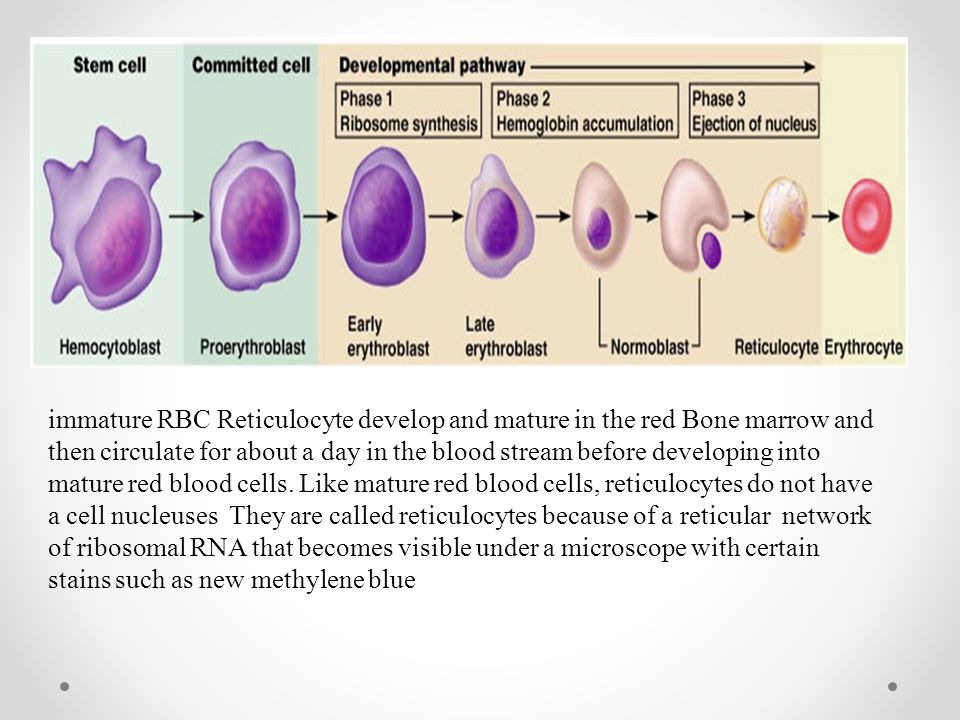High hemoglobin hematocrit. High Hemoglobin Count: Causes, Treatments, and Polycythemia Vera Explained
What causes high hemoglobin levels. How is polycythemia vera diagnosed. What are the treatment options for elevated hemoglobin counts. What complications can arise from untreated polycythemia vera.
Understanding Hemoglobin and Its Importance
Hemoglobin is a crucial protein found in red blood cells that plays a vital role in transporting oxygen throughout the body. Its presence gives blood its characteristic red color due to the iron content. A hemoglobin count serves as an indirect measure of the number of red blood cells in an individual’s body.
What are the normal hemoglobin levels? For men, the normal range is typically between 14 to 17 gm/dL (grams per deciliter), while for women, it’s 12 to 15 gm/dL. However, it’s important to note that these values can vary based on factors such as age, race, gender, and overall health status.
The Significance of Hemoglobin Tests
Hemoglobin tests are usually conducted as part of a complete blood count (CBC), a routine blood test that also measures hematocrit – the percentage of blood volume composed of red blood cells. These tests are invaluable for diagnosing various medical conditions and assessing an individual’s general health.

Causes of High Hemoglobin Counts
Elevated hemoglobin levels can be attributed to various factors, ranging from lifestyle choices to underlying medical conditions. Understanding these causes is crucial for proper diagnosis and treatment.
Medical Conditions Associated with High Hemoglobin
- Polycythemia vera (PV)
- Lung diseases (COPD, emphysema, pulmonary fibrosis)
- Heart disease, particularly congenital heart defects
- Kidney tumors
- Dehydration
- Hypoxia (low blood oxygen levels)
- Carbon monoxide exposure
Lifestyle Factors Influencing Hemoglobin Levels
- Cigarette smoking
- Living at high altitudes
- Use of performance-enhancing drugs (e.g., anabolic steroids, erythropoietin)
How does living at high altitudes affect hemoglobin levels? At higher elevations, the body compensates for lower oxygen levels by producing more red blood cells, leading to increased hemoglobin concentrations.
Diagnosing High Hemoglobin Counts
High hemoglobin counts are often discovered incidentally during routine blood tests for other health concerns. When such results are found, healthcare providers typically conduct further investigations to determine the underlying cause.
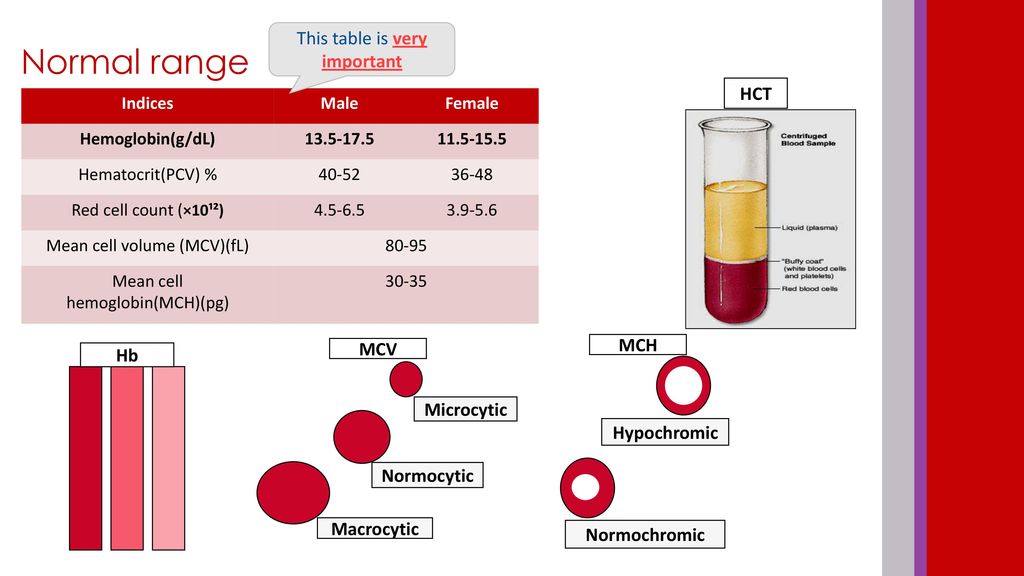
What additional tests might a doctor order to investigate high hemoglobin levels? These may include:
- Bone marrow biopsy
- Genetic testing for JAK2 mutations (associated with polycythemia vera)
- Erythropoietin level test
- Oxygen saturation measurement
- Chest X-ray or CT scan to assess lung conditions
Treatment Options for High Hemoglobin
The treatment approach for high hemoglobin counts depends largely on the underlying cause. In some cases, addressing the primary condition or making lifestyle changes may be sufficient to normalize hemoglobin levels.
Phlebotomy: A Common Treatment Approach
For conditions like polycythemia vera or when rapid reduction of hemoglobin is necessary, phlebotomy is often the treatment of choice. But what exactly is phlebotomy?
Phlebotomy is a procedure where a healthcare professional draws blood from a vein, typically in the arm. The process is similar to donating blood. In cases of high hemoglobin, this procedure may need to be repeated regularly until hemoglobin levels return to normal range.

Other Treatment Modalities
- Hydration therapy for dehydration-induced high hemoglobin
- Oxygen therapy for hypoxia-related cases
- Medications to suppress red blood cell production in polycythemia vera
- Lifestyle modifications (e.g., smoking cessation, avoiding high altitudes)
Polycythemia Vera: A Deep Dive
Polycythemia vera (PV) is a blood disorder characterized by the overproduction of red blood cells. This condition results in thickened blood, which flows more slowly and has an increased tendency to form clots within the body.
How prevalent is polycythemia vera? PV affects approximately 22 out of every 100,000 individuals, with a higher incidence in men over 60 years of age.
Types and Causes of Polycythemia Vera
Polycythemia vera is classified into two main types based on its cause:
- Primary PV: Caused by a genetic mutation, most commonly in the JAK2 gene
- Secondary PV: Results from external factors or other medical conditions
What percentage of PV cases are associated with JAK2 mutations? Studies indicate that approximately 95% of PV patients have a mutation in the JAK2 gene.

Symptoms and Complications of Polycythemia Vera
Recognizing the symptoms of polycythemia vera is crucial for early diagnosis and treatment. Common symptoms include:
- Headaches
- Dizziness
- Fatigue
- Itchy skin, especially after warm baths or showers
- Redness or flushing of the skin
- Shortness of breath
- Numbness or tingling in the extremities
- Chest pain
- Abdominal discomfort due to an enlarged spleen
What are the potential complications of untreated polycythemia vera? If left untreated, PV can lead to serious health issues, including:
- Blood clots, increasing the risk of heart attack and stroke
- Enlarged spleen (splenomegaly)
- Gout
- Peptic ulcers
- Progression to myelofibrosis or acute leukemia
Diagnosis and Management of Polycythemia Vera
Diagnosing polycythemia vera involves a combination of blood tests, bone marrow examination, and genetic testing. The World Health Organization (WHO) has established specific criteria for PV diagnosis, which include both major and minor criteria.

Diagnostic Criteria for Polycythemia Vera
What are the major criteria for diagnosing PV according to WHO guidelines?
- Hemoglobin level >16.5 g/dL in men or >16.0 g/dL in women
- Presence of JAK2 V617F or other functionally similar mutation
- Bone marrow biopsy showing hypercellularity with trilineage growth
Minor criteria include subnormal serum erythropoietin level and endogenous erythroid colony formation in vitro.
Treatment Approaches for Polycythemia Vera
The management of polycythemia vera aims to reduce the risk of thrombosis and alleviate symptoms. Treatment options include:
- Phlebotomy: Regular blood removal to maintain hematocrit below 45%
- Low-dose aspirin: To reduce the risk of blood clots
- Hydroxyurea: A chemotherapy drug used to suppress bone marrow activity
- Interferon alpha: An alternative to hydroxyurea, especially for younger patients
- JAK2 inhibitors: Such as ruxolitinib for patients who don’t respond to other treatments
How often should patients with PV undergo phlebotomy? The frequency of phlebotomy varies depending on individual patient factors, but it’s typically performed every few weeks initially, with the interval increasing as the condition stabilizes.

Living with High Hemoglobin and Polycythemia Vera
Managing high hemoglobin levels or polycythemia vera requires a comprehensive approach that extends beyond medical treatment. Patients can take several steps to improve their quality of life and reduce the risk of complications.
Lifestyle Modifications
- Staying well-hydrated to maintain proper blood viscosity
- Engaging in regular, moderate exercise to improve circulation
- Avoiding extreme temperatures, especially heat, which can exacerbate symptoms
- Quitting smoking to reduce cardiovascular risks
- Maintaining a healthy weight to minimize additional stress on the cardiovascular system
Dietary Considerations
What dietary changes can benefit individuals with high hemoglobin or PV?
- Limiting iron-rich foods, as excess iron can contribute to increased red blood cell production
- Consuming a balanced diet rich in fruits, vegetables, and whole grains
- Avoiding alcohol, which can lead to dehydration and increase blood viscosity
- Incorporating foods with natural blood-thinning properties, such as garlic, ginger, and omega-3 fatty acids
It’s important to note that dietary changes should always be discussed with a healthcare provider, as individual needs may vary based on overall health status and concurrent medications.

Regular Monitoring and Follow-up
Patients with high hemoglobin levels or polycythemia vera require ongoing medical supervision. Regular check-ups and blood tests are essential to monitor the condition and adjust treatment as necessary. How often should these follow-ups occur? The frequency of monitoring depends on the severity of the condition and the treatment regimen, but typically ranges from every few weeks to every few months.
Research and Future Directions in High Hemoglobin and PV Management
The field of hematology continues to evolve, with ongoing research aimed at improving the diagnosis, treatment, and management of conditions associated with high hemoglobin levels, particularly polycythemia vera.
Emerging Therapies
What new treatments are being developed for polycythemia vera? Some promising areas of research include:
- Novel JAK2 inhibitors with improved efficacy and reduced side effects
- Combination therapies targeting multiple pathways involved in the disease process
- Immunotherapy approaches to modulate the immune system’s role in PV
- Gene therapy techniques to correct the underlying genetic mutations
Advances in Diagnostic Techniques
Researchers are also working on developing more sensitive and specific diagnostic tools for PV and related conditions. These include:
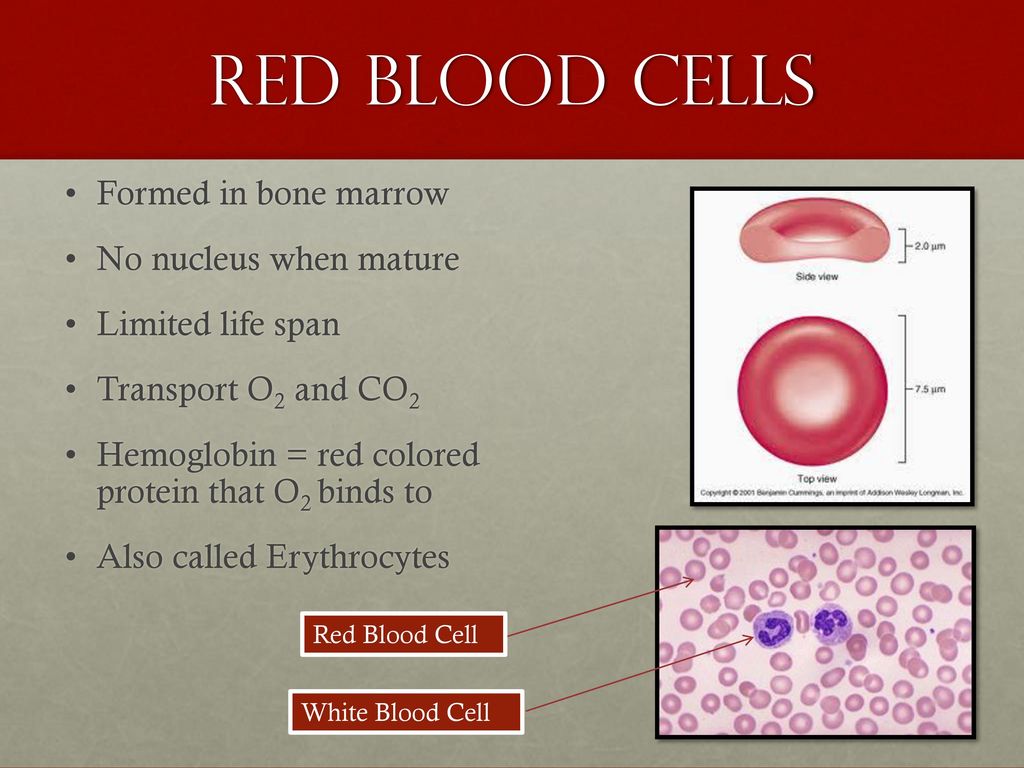
- Advanced molecular testing to detect rare genetic mutations associated with PV
- Improved imaging techniques for assessing bone marrow composition and function
- Development of biomarkers for early detection and monitoring of disease progression
Personalized Medicine Approaches
The future of high hemoglobin and PV management lies in personalized medicine. How might personalized approaches improve patient outcomes? By tailoring treatment strategies based on individual genetic profiles, lifestyle factors, and disease characteristics, healthcare providers can optimize therapy and minimize side effects.
This personalized approach may involve:
- Genetic testing to guide treatment selection
- Monitoring of minimal residual disease to adjust therapy intensity
- Integration of lifestyle and environmental factors into treatment plans
- Use of artificial intelligence and machine learning to predict treatment responses and disease progression
As research continues to advance our understanding of high hemoglobin conditions and polycythemia vera, patients can look forward to more effective, tailored treatment options and improved quality of life. The key to successful management remains early diagnosis, comprehensive care, and ongoing monitoring under the guidance of experienced healthcare professionals.

High Hemoglobin Count: Causes, Treatments
Overview
Why is Hemoglobin A1c important.
What is a high hemoglobin count?
Hemoglobin is a protein in red blood cells that helps blood carry oxygen throughout the body. (Hemoglobin contains iron, which gives blood its red color.) The hemoglobin count is an indirect measurement of the number of red blood cells in your body. When the hemoglobin count is higher than normal, it may be a sign of a health problem.
Normal hemoglobin counts are 14 to 17 gm/dL (grams per deciliter) for men and 12 to 15 gm/dL for women. Hemoglobin levels depend on many factors, including age, race, gender and the general health of the person.
Hemoglobin is usually measured as part of a complete blood count (a routine blood test), along with hematocrit (the percentage of the blood that is made up of red blood cells), to help diagnose medical conditions and learn more about the person’s health.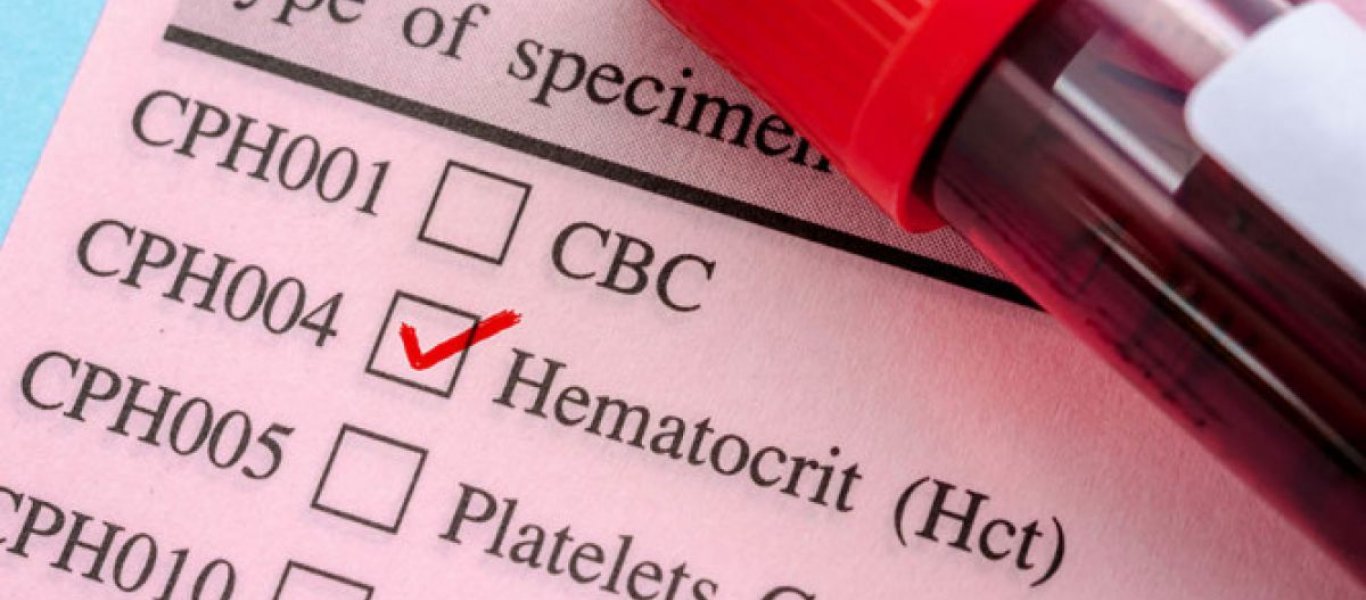
Symptoms and Causes
What can cause a high hemoglobin count?
Many factors can affect the hemoglobin level. Sometimes a high hemoglobin count is the result of lifestyle or a side effect of taking medication.
Medical conditions that can cause high hemoglobin levels include:
- Polycythemia vera (the bone marrow produces too many red blood cells)
- Lung diseases such as COPD, emphysema or pulmonary fibrosis (lung tissue becomes scarred)
- Heart disease, especially congenital heart disease (the baby is born with it)
- Kidney tumors
- Dehydration (from diarrhea or lack of fluids)
- Hypoxia (low blood oxygen levels)
- Carbon monoxide exposure (usually related to smoking)
Lifestyle factors that can cause a high hemoglobin count include:
- Smoking cigarettes
- Living at a high altitude
- Taking performance-enhancing drugs such as anabolic steroids (for example, synthetic testosterone) or erythropoietin
Diagnosis and Tests
What can I expect when my doctor finds a high hemoglobin count?
Doctors usually find a high hemoglobin count when conducting tests for another health issue. Your doctor may perform additional tests to determine the cause of the higher hemoglobin levels. These tests may look for conditions that cause your body to produce too many red blood cells or disorders that restrict your oxygen supply.
Your doctor may perform additional tests to determine the cause of the higher hemoglobin levels. These tests may look for conditions that cause your body to produce too many red blood cells or disorders that restrict your oxygen supply.
Management and Treatment
How is a high hemoglobin count treated?
If a medical condition is causing high hemoglobin levels, your doctor may recommend a procedure or medication to lower it.
In a procedure called a phlebotomy, a health professional inserts a needle into your vein and drains blood through a tube into a bag or container. You might need to have this procedure on a repeated basis until your hemoglobin level is close to normal.
Types, Symptoms, Treatment & Complications
Overview
What is polycythemia vera (PV)?
PV is a blood disorder in which the body makes too many red blood cells.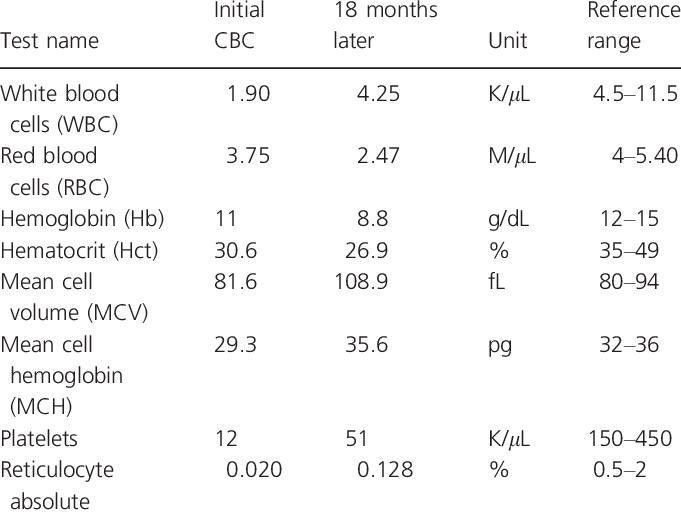 These extra red cells make blood thicker than normal. The thickened blood flows slower and may clot within your body.
These extra red cells make blood thicker than normal. The thickened blood flows slower and may clot within your body.
Red blood cells carry oxygen to organs and tissues throughout the body. If the blood moves too slowly or clots, the cells cannot deliver enough oxygen. This situation can cause serious complications including heart attack, stroke, and heart failure.
PV affects about 22 out of every 100,000 people. Doctors diagnose it most commonly in men over 60 years old.
Symptoms and Causes
What causes polycythemia vera (PV)?
Doctors classify PV into 2 types. The cause of the condition determines each type.
- Primary PV occurs when there is a genetic mutation (abnormality). Almost all people diagnosed with PV have a mutation in the JAK2 (Janus kinase) gene.
 In most cases, PV is not hereditary (passed down through families), but it is hereditary in a few cases. Mutations in the TET2 gene are also found commonly in PV cells.
In most cases, PV is not hereditary (passed down through families), but it is hereditary in a few cases. Mutations in the TET2 gene are also found commonly in PV cells. - Secondary PV (acquired) occurs in people who experience low levels of oxygen in their blood for long periods of time. This extended lack of oxygen causes the body to make extra amounts of a hormone called erythropoietin (EPO). Too much EPO in the body can cause it to make too many red blood cells.
What are the symptoms of polycythemia vera (PV)?
People with PV experience a variety of symptoms. Some people have no symptoms at all. Symptoms include:
- Tiredness and weakness
- Difficulty breathing when lying down
- Enlarged (bigger than normal) spleen (organ that clears blood cells from the body)
- Blurry or double vision
- Itchy skin, especially following a warm bath
- Skin that is reddish or purplish in color
- Bleeding gums
- Weight loss
- Tinnitus (ringing in the ears)
- Sweating, especially at night
Diagnosis and Tests
How do doctors diagnose polycythemia vera (PV)?
To diagnose PV, your doctor will perform a test called a complete blood count (CBC) to see if your number of red blood cells is higher than normal.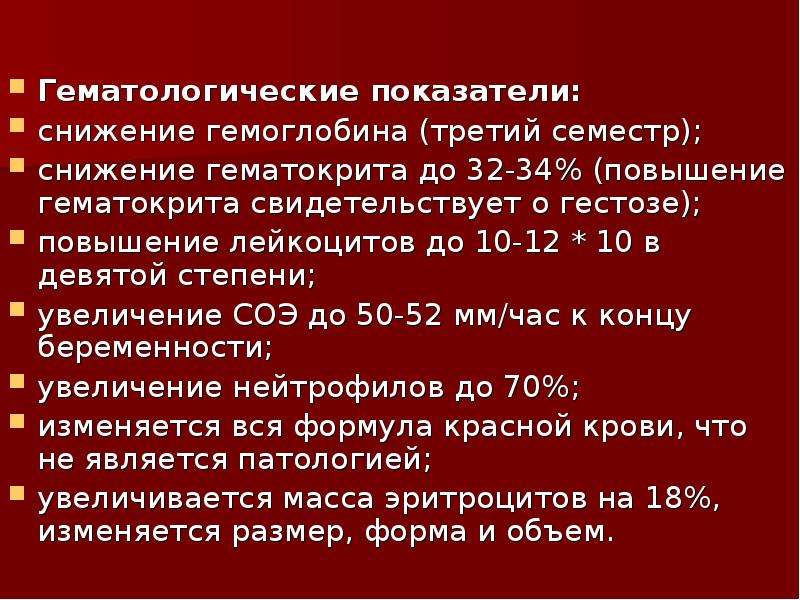
Your doctor may also test your blood to look for amounts of a hormone called erythropoietin. Lower-than-normal levels of this hormone can be a sign of PV. Doctors use genetic tests to identify the mutation in the JAK2 gene.
Management and Treatment
What are the treatments for polycythemia vera (PV)?
Doctors treat PV with a technique called phlebotomy. This procedure removes blood from your body. Red blood cells contain large amounts of iron. By removing iron from the body, the production of red blood cells by the bone marrow slows down.
During phlebotomy, a health professional will insert a needle into a vein and drain blood through a tube into a container. People with a new PV diagnosis typically undergo phlebotomy once a week until their red blood cell level becomes closer to normal. After that, they may have phlebotomy every three months to keep levels normal.
After that, they may have phlebotomy every three months to keep levels normal.
Doctors also prescribe medicines to treat PV. The most common drug used to treat PV is hydroxyurea (Hydrea®, Droxia®). This medicine helps slow the production of red blood cells. Some people with PV take aspirin every day because it helps thin the blood.
Two other drugs used to treat PV are ruxolitininib (Jakafi®), which is used for patients who do not respond to or cannot take hydroxyurea. Pegylated interferon (Pegasis®), is used to treat hepatitis C. However, an off-label use for the interferon has been used to treat patients with PV.
What are the complications of polycythemia vera (PV)?
The most dangerous complication of PV is a blood clot. When a clot travels to the heart or brain, it can cause a heart attack or stroke. A clot can also travel to the lungs (pulmonary embolism). These events can be fatal.
A bone marrow disorder called myelofibrosis is another potential complication of PV.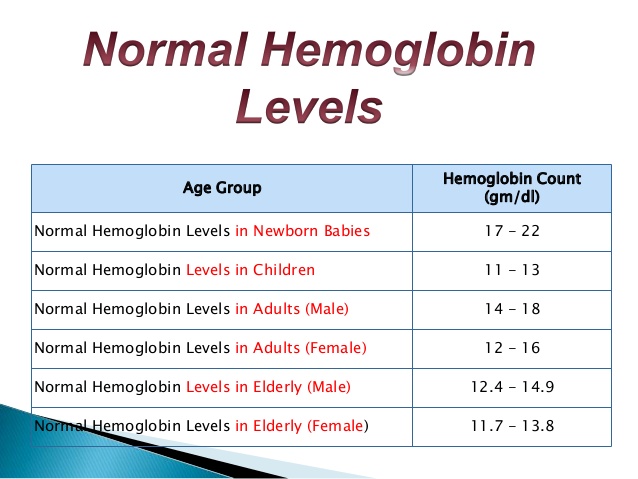 Myelofibrosis leads to scarring in the bone marrow and anemia (low red blood cell count). In rare cases, PV can develop into a blood cancer called acute myeloid leukemia (AML). AML can lead to anemia and infection, and spread beyond the blood to other areas in the body.
Myelofibrosis leads to scarring in the bone marrow and anemia (low red blood cell count). In rare cases, PV can develop into a blood cancer called acute myeloid leukemia (AML). AML can lead to anemia and infection, and spread beyond the blood to other areas in the body.
Prevention
Can polycythemia vera (PV)? be prevented?
For most patients, there is no clear cause to the PV and it cannot be prevented.
Outlook / Prognosis
What is the outlook for people with polycythemia vera (PV)?
There is no cure for PV. People with the condition usually need treatment their entire lives.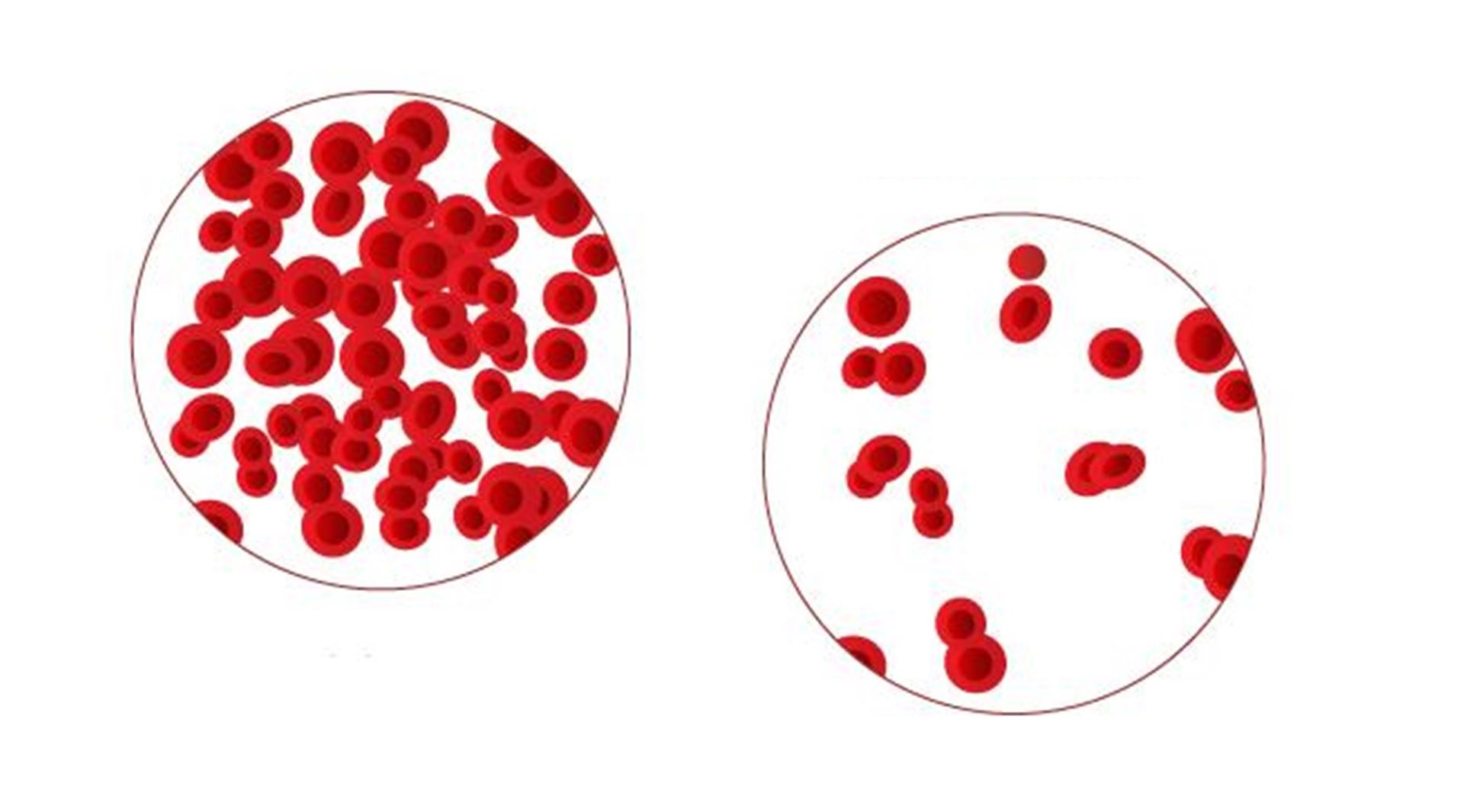
Regular doctor visits and blood tests can help ensure the disease does not get worse. PV treatment helps you manage the disorder to ease symptoms and avoid complications for a healthier life.
Living With
When should I call the doctor if I have polycythemia vera (PV) or think I might?
Contact your doctor if you develop symptoms of PV. Early diagnosis and treatment can help keep PV from interfering with daily life.
Consulting with a doctor who specializes in genetic conditions may help you learn how to manage issues related to living with PV. Ask your doctor for a referral for a genetic specialist for additional counseling.
Adult Congenital Heart Disease: Symptoms, Diagnosis & Treatments
Overview
Congenital heart disease is a type of defect in one or more structures of the heart or blood vessels that occur before birth.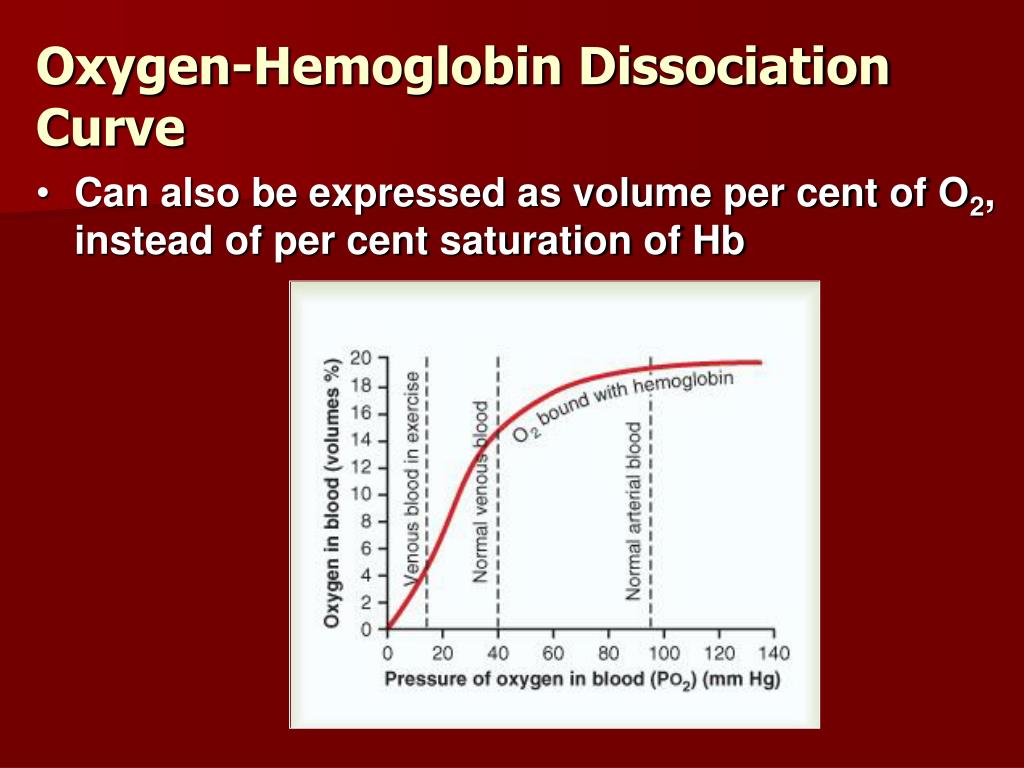 The heart structures, or vessels, do not form as they should during pregnancy, while the fetus is developing in the uterus.
The heart structures, or vessels, do not form as they should during pregnancy, while the fetus is developing in the uterus.
In the United States:
- They affect about 8 to 10 out of every 1,000 children. Congenital heart defects may produce symptoms at birth, during childhood and sometimes not until adulthood.
- 800,000 adults in the United States have grown into adulthood with congenital heart disease. This number increases by about 20,000 each year.
- Adult congenital heart disease is not uncommon. 1 in 150 adults are expected to have some form of congenital heart disease.
- Heart Disease and Stroke Statistics–2017 Update
The most common congenital heart disorders affecting adults are:
Symptoms and Causes
Symptoms of Congenital Heart Disease
Congenital heart defects may be diagnosed before birth, right after birth, during childhood or not until adulthood.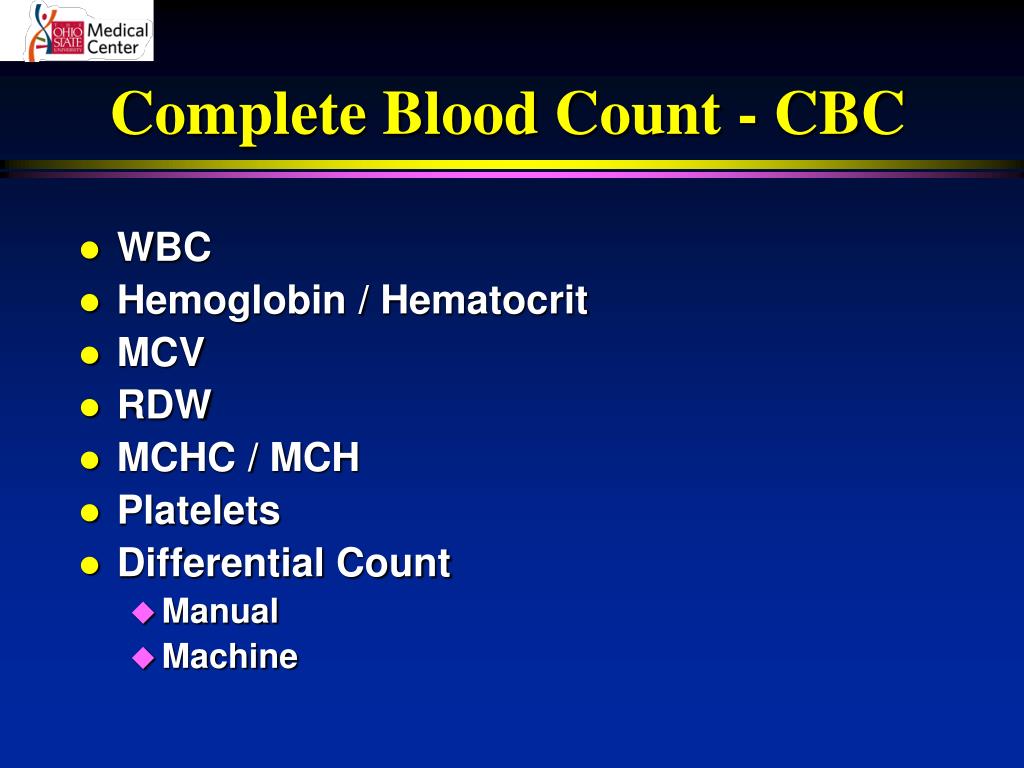 It is possible to have a defect and no symptoms at all. In adults, if symptoms of congenital heart disease are present, they may include:
It is possible to have a defect and no symptoms at all. In adults, if symptoms of congenital heart disease are present, they may include:
- shortness of breath
- poor exercise tolerance
Diagnosis and Tests
Diagnosis of Congenital Heart Disease
Congenital heart disease is diagnosed by a murmur on a physical exam and several diagnostic tests:
Management and Treatment
Treatment of Congenital Heart Disease
Treatment is based on the severity of the congenital heart disease. Some mild heart defects do not require any treatment.Others can be treated with medications, invasive procedures or surgery. Most adults with congenital heart disease should be monitored by a congenital heart specialist and may need to take precautions to prevent endocarditis (an infection of the heart) throughout their life.
Most adults with congenital heart disease should be monitored by a congenital heart specialist and may need to take precautions to prevent endocarditis (an infection of the heart) throughout their life.
Surgical Treatment Options
Resources
How to find a doctor if you have adult congenital heart disease
Doctors vary in quality due to differences in training and experience; hospitals differ in the number of services available. The more complex your medical problem, the greater these differences in quality become and the more they matter.
Clearly, the doctor and hospital that you choose for complex, specialized medical care will have a direct impact on how well you do. To help you make this choice, read more about our Sydell and Arnold Miller Family Heart & Vascular Institute outcomes.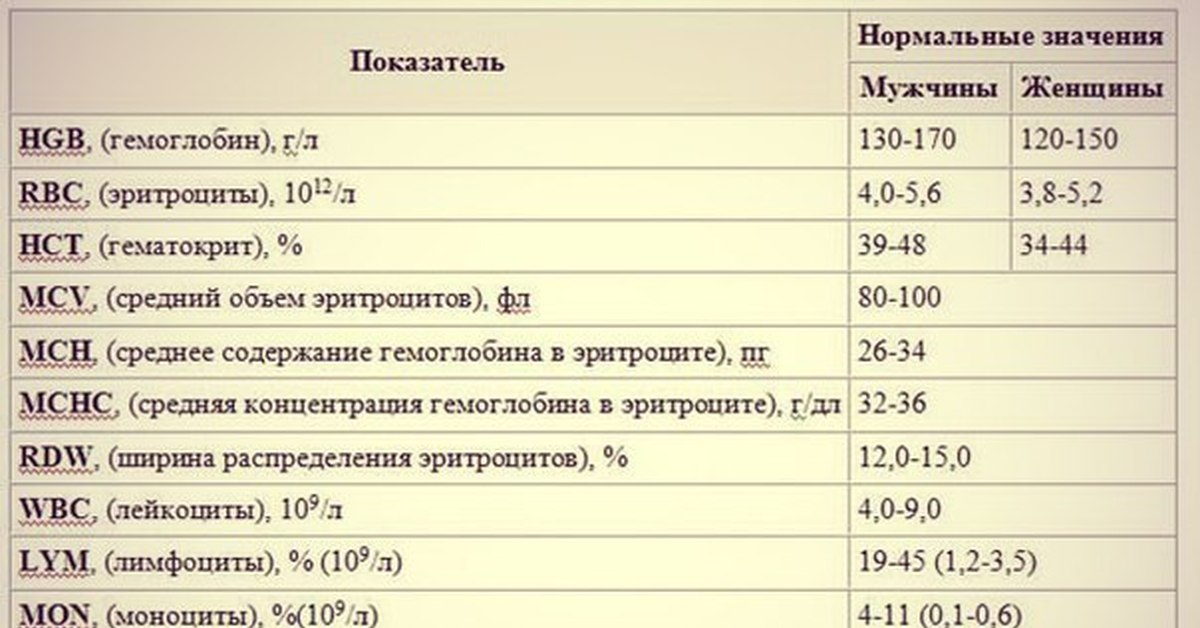
The Center for Adult Congenital Heart Disease in the Sydell and Arnold Miller Family Heart, Vascular & Thoracic Institute is a specialized center involving a multi-disciplinary group of specialists, including cardiologists, cardiac surgeons and nurses from Cardiovascular Medicine, Pediatric Cardiology, Pediatric and Congenital Heart Surgery, Cardiothoracic Surgery, Diagnostic Radiology, Pulmonary, Allergy and Critical Care Medicine, and Transplantation Center, who provide a comprehensive approach to diagnosing and treating adult congenital heart disease.
Learn more about specialized teams of doctors who treat congenital heart disease.
You may also use our MyConsult second opinion consultation using the Internet.
For younger patients with congenital heart disease:
See About Us to learn more about the Sydell and Arnold Miller Family Heart, Vascular & Thoracic Institute.
Contact
If you need more information,click here to contact us, chat online with a nurse or call the Miller Family Heart, Vascular & Thoracic Institute Resource & Information Nurse at 216.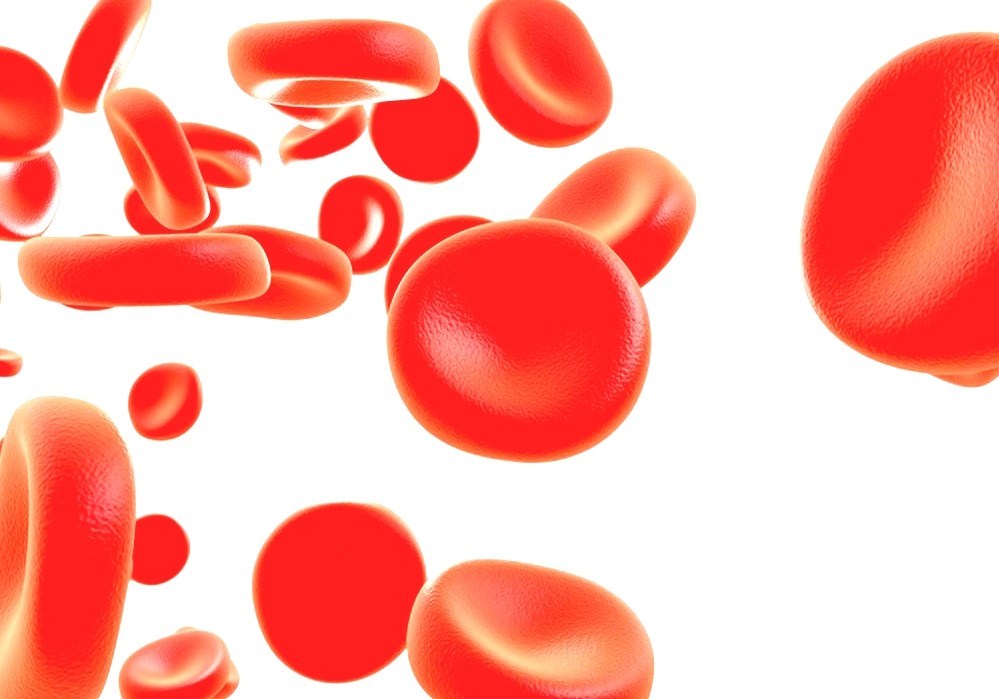 445.9288 or toll-free at 866.289.6911. We would be happy to help you.
445.9288 or toll-free at 866.289.6911. We would be happy to help you.
Becoming a Patient
Treatment Options
Treatment Guides
Diagnostic Tests
Congenital heart disease is diagnosed by a murmur on a physical exam and several diagnostic tests:
Anatomy
Webchats
Our webchats and video chats give patients and visitors another opportunity to ask questions and interact with our physicians.
Videos
Interactive Tools
Resource Links
*A new browser window will open with this link.
The inclusion of links to other websites does not imply any endorsement of the material on those websites nor any association with their operators.
Why choose Cleveland Clinic for your care?
Our outcomes speak for themselves. Please review our facts and figures and if you have any questions don’t hesitate to ask.
High hemoglobin count Causes – Mayo Clinic
A high hemoglobin count occurs most commonly when your body requires an increased oxygen-carrying capacity, usually because:
- You smoke
- You live at a high altitude and your red blood cell production naturally increases to compensate for the lower oxygen supply there
High hemoglobin count occurs less commonly because:
- Your red blood cell production increases to make up for chronically low blood oxygen levels due to poor heart or lung function.

- Your bone marrow produces too many red blood cells.
- You’ve taken drugs or hormones, most commonly erythropoietin (EPO), that stimulate red blood cell production. You’re not likely to get a high hemoglobin count from EPO given to you for chronic kidney disease. But EPO doping — getting injections to enhance athletic performance — can cause a high hemoglobin count.
If you have a high hemoglobin count without other abnormalities, it’s unlikely to indicate a related serious condition. Conditions that can cause a high hemoglobin count include:
- Congenital heart disease in adults
- COPD (chronic obstructive pulmonary disease) exacerbation — worsening of symptoms
- Dehydration
- Emphysema
- Heart failure
- Kidney cancer
- Liver cancer
- Polycythemia vera
Causes shown here are commonly associated with this symptom. Work with your doctor or other health care professional for an accurate diagnosis.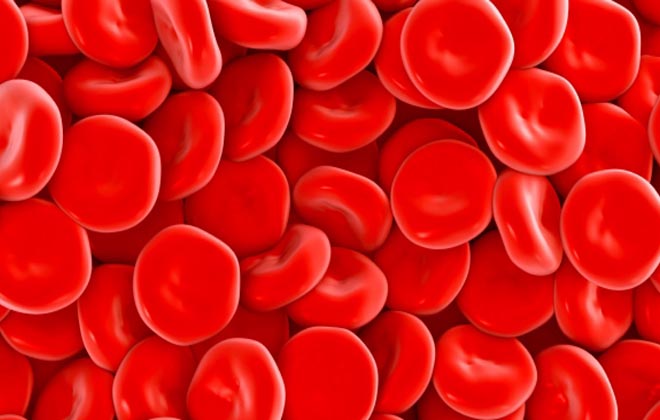
- Definition
- When to see a doctor
Dec. 02, 2020
Show references
- Hemoglobin. Lab Tests Online. https://labtestsonline.org/understanding/analytes/hemoglobin/tab/test/. Accessed Dec. 30, 2018.
- Blood basics. American Society of Hematology. http://www.hematology.org/Patients/Basics/. Accessed Dec. 30, 2018.
- Blood tests. National Heart, Lung, and Blood Institute. https://www.nhlbi.nih.gov/health-topics/blood-tests. Accessed Dec. 30, 2018.
- Understanding blood counts. Leukemia & Lymphoma Society. https://www.lls.org/managing-your-cancer/lab-and-imaging-tests/understanding-blood-counts. Accessed Dec. 30, 2018.
- Tefferi A. Clinical manifestations and diagnosis of polycythemia vera. https://www.uptodate.com/contents/search. Accessed Dec. 30, 2018.
- Tefferi A. Diagnostic approach to the patient with polycythemia. https://www.uptodate.com/contents/search. Accessed Jan. 3, 2019.
.
Elevated Hemoglobin or Hematocrit – Cancer Therapy Advisor
Home » Decision Support in Medicine » LabMed
Differential Diagnosis
Pt with true polycythemia with an increased red blood cell (RBC) mass.
Pt with a relative polycythemia and a normal RBC mass as a result of dehydration or another state producing a low plasma volume.
Dangerous Situations
Polycythemia in which the RBC mass is high enough to impair blood flow.
Commonly Encountered Situations
Polycythemia vera, also known as primary polycythemia, is not secondary to any disorder.
Polycythemia from an underlying disorder (secondary polycythemia) is much more common than primary polycythemia.
Suggested Additional Lab Testing
Serum erythropoietin level is low in primary polycythemia, unlike secondary polycythemia, so the erythropoietin (EPO) level can be useful in separating primary and secondary polycythemia.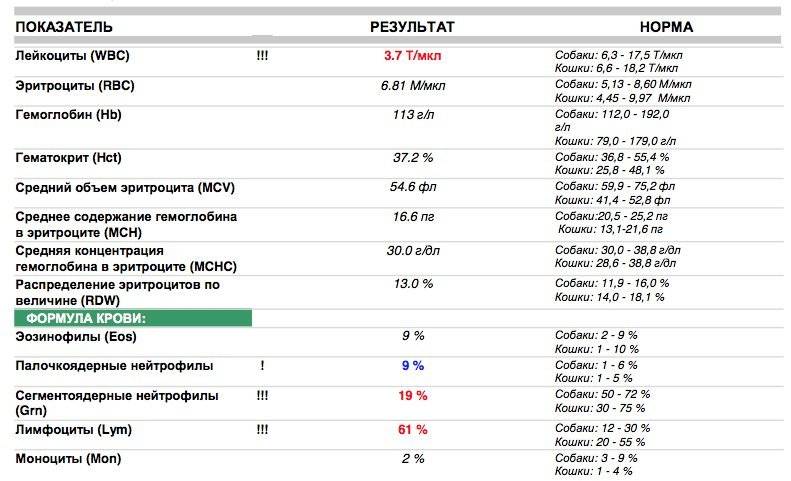
Strict criteria are required for the diagnosis of polycythemia vera: (A1 plus A2 plus any other A) or (A1 plus A2 plus any 2B) criteria:
Increased RBC mass by hemoglobin, hematocrit, or RBC number (A1)
Erythrocytosis is not secondary to another cause (A2)
Splenomegaly (A3)
Clonal cytogenetic abnormality other than the Philadelphia chromosome (A4)
Endogenous erythroid colony formation in vitro (A5)
Platelet count greater than 400,000/µL (B1)
WBC count greater than 12,000/µL (B2)
Panmyelosis on bone marrow biopsy (B3)
Low serum EPO (B4)
Bone marrow biopsy may be useful to determine if polycythemia vera is in a hypercellular phase with greater than 60% cellularity or in a hypocellular bone marrow with markedly increased reticulin fibers.
Copyright © 2017, 2013 Decision Support in Medicine, LLC. All rights reserved.
No sponsor or advertiser has participated in, approved or paid for the content provided by Decision Support in Medicine LLC. The Licensed Content is the property of and copyrighted by DSM.
Want to read more?
Please login or register first to view this content.
Login
Register
Open
Next post in LabMed
Close
Close more info about Elevated Hemoglobin or Hematocrit
Loading…
Close more info about Elevated Hemoglobin or Hematocrit
Loading…
Close more info about Elevated Hemoglobin or Hematocrit
Loading…
Close more info about Elevated Hemoglobin or Hematocrit
Loading. ..
..
Want to view more content from Cancer Therapy Advisor?
Register now at no charge to access unlimited clinical news, full-length features, case studies, conference coverage, and more.
{{login-button}} {{register-button}}
Want to read more?
Please login or register first to view this content.
Login
Register
Polycythemia Vera – American Family Physician
1. Tefferi A.
Polycythemia vera: a comprehensive review and clinical recommendations. Mayo Clin Proc.
2003;78:174–94….
2. Berk PD,
Goldberg JD,
Donovan PB,
Fruchtman SM,
Berlin NI,
Wasserman LR.
Therapeutic recommendations in polycythemia vera based on Polycythemia Vera Study Group protocols. Semin Hematol.
1986;23:132–43.
3. Lamy T,
Devillers A,
Bernard M,
Moisan A,
Grulois I,
Drenou B,
et al.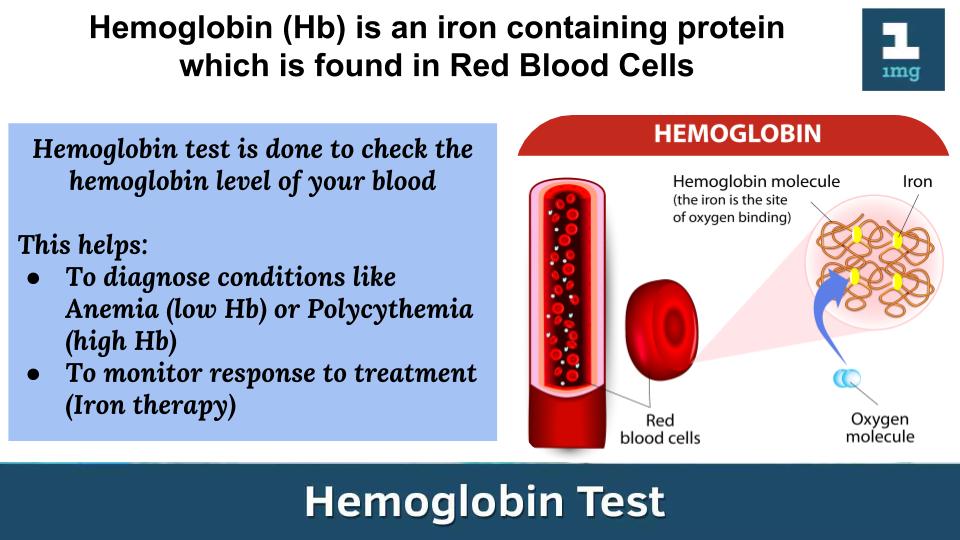
Inapparent polycythemia vera: an unrecognized diagnosis. Am J Med.
1997;102:14–20.
4. Hoffman R. Hematology: basic principles and practice. 3d ed. New York: Churchill Livingstone, 2000:1130–55.
5. Tefferi A.
Diagnosing polycythemia vera: a paradigm shift. Mayo Clin Proc.
1999;74:159–62.
6. Murphy S.
Diagnostic criteria and prognosis in polycythemia vera and essential thrombocythemia. Semin Hematol.
1999;36(1 Suppl 2):9–13.
7. Polycythemia: primary and secondary. In: Kjeldsberg CR. Practical diagnosis of hematologic disorders. 3d ed. Chicago: ASCP Press, 2000:121.
8. Berlin NI.
Polycythemia vera: diagnosis and treatment 2002. Expert Rev Anti-cancer Ther.
2002;2:330–6.
9. Pearson TC,
Guthrie DL,
Simpson J,
Chinn S,
Barosi G,
Ferrant A,
et al.
Interpretation of measured red cell mass and plasma volume in adults: Expert Panel on Radionuclides of the International Council for Standardization in Haematology.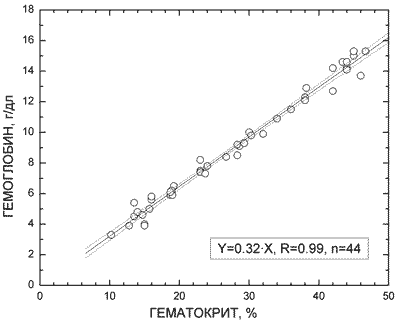 Br J Haematol.
Br J Haematol.
1995;89:748–56.
10. Pearson TC.
Evaluation of diagnostic criteria in polycythemia vera. Semin Hematol.
2001;38(1 Suppl 2):21–4.
11. Grover SA,
Barkun AN,
Sackett DL.
The rational clinical examination. Does this patient have splenomegaly?. JAMA.
1993;270:2218–21.
12. Weinberg RS,
Worsley A,
Gilbert HS,
Cuttner J,
Berk PD,
Alter BP.
Comparison of erythroid progenitor cell growth in vitro in polycythemia vera and chronic myelogenous leukemia: only polycythemia vera has endogenous colonies. Leuk Res.
1989;13:331–8.
13. Michiels JJ,
Juvonen E.
Proposal for revised diagnostic criteria of essential thrombocythemia and polycythemia vera by the thrombocythemia vera study group. Semin Thromb Hemost.
1997;23:339–47.
14. Berk PD, Wasserman LR, Fruchtman SM, Goldberg JD. Treatment of polycythemia vera: a summary of clinical trials conducted by the polycythemia vera study group.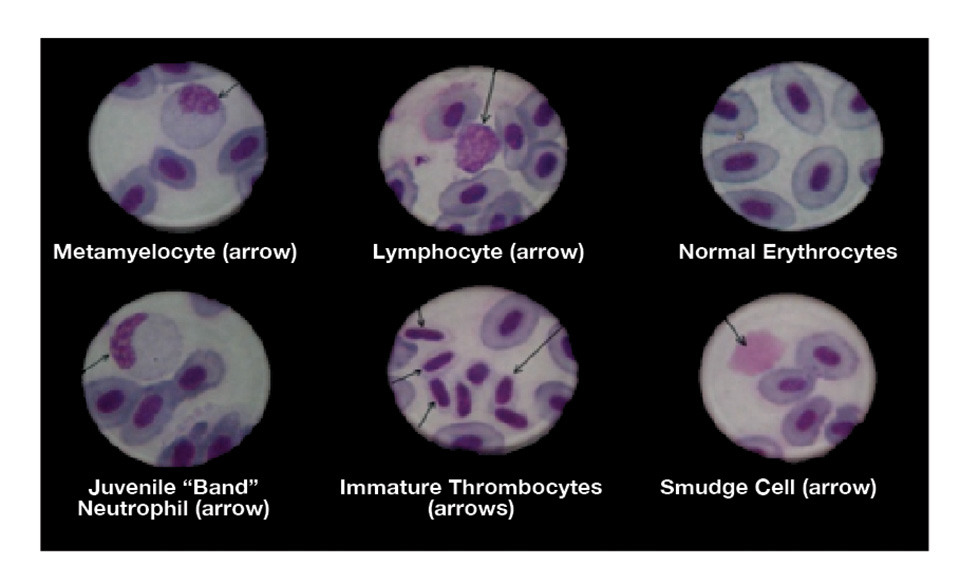 In: Wasserman LR, Berk PD, Berlin NI, eds. Polycythemia vera and the myeloproliferative disorders. Philadelphia: W.B. Saunders, 1995:166–94.
In: Wasserman LR, Berk PD, Berlin NI, eds. Polycythemia vera and the myeloproliferative disorders. Philadelphia: W.B. Saunders, 1995:166–94.
15. Diehn F,
Tefferi A.
Pruritus in polycythaemia vera: prevalence, laboratory correlates and management. Br J Haemat.
2001;115:619–21.
16. Fruchtman SM, Wasserman LR. Therapeutic recommendations for polycythemia vera. In: Wasserman LR, Berk PD, Berlin NI, eds. Polycythemia vera and the myeloproliferative disorders. Philadelphia: W.B. Saunders, 1995:337.
17. Michiels JJ.
Erythromelalgia and vascular complications in polycythemia vera. Semin Thromb Hemost.
1997;23:441–54.
18. Gilbert HS.
Current management in polycythemia vera. Semin Hematol.
2001;38(1 Suppl 2):25–8.
19. Barbui T,
Finazzi G.
Treatment of polycythemia vera. Haematologica.
1998;83:143–9.
20. Polycythemia vera: the natural history of 1213 patients followed for 20 Years. Gruppo Italiano Studio Policitemia. Ann Intern Med.
1995;123:656–64.
21. Streiff MB,
Smith B,
Spivak JL.
The diagnosis and management of polycythemia vera in the era since the Polycythemia Vera Study Group: a survey of American Society of Hematology members’ practice patterns. Blood.
2002;99:1144–9.
22. Michiels JJ,
Barbui T,
Finazzi G,
Fuchtman SM,
Kutti J,
Rain JD,
et al.
Diagnosis and treatment of polycythemia vera and possible future study designs of the PVSG. Leuk Lymphoma.
2000;36:239–53.
23. Lengfelder E,
Berger U,
Hehlmann R.
Interferon alpha in the treatment of polycythemia vera. Ann Hematol.
2000;79:103–9.
24. Silver RT.
Interferon alpha-2b: a new treatment for polycythemia vera. Ann Intern Med.
1993;119:1091–2.
25. Solberg LA Jr.
Therapeutic options for essential thrombocythemia and polycythemia vera. Semin Oncol.
2002;29(3 Suppl 10):10–5.
26. Physician’s desk reference. 58th ed. Montvale, N.J.: Thomson PDR, 2004.
27. Klasco RK, ed. USP DI drug information for the healthcare professional. Greenwood Village, Colo.: Thomson Micromedex, 2004.
Diagnosing or Ruling Out Polycythemia Vera in Patients With Erythrocytosis – Hematology & Oncology
H&O How is erythrocytosis defined?
JP Erythrocytosis is the presence of too many red blood cells. Several different parameters are used to diagnose erythrocytosis in a blood sample: the number of red blood cells, the hematocrit, and the hemoglobin concentration. Because the production of red cells is determined by the amount of oxygen delivered to tissues, it makes sense to use first the most physiologically relevant parameter—that is, the hemoglobin concentration. The hemoglobin concentration in most US locations ranges from 12 to 16 g/dL in healthy women of European descent, and from 14 to 18 g/dL in healthy men of European descent. The range is slightly lower in healthy African Americans, partly because of a high prevalence of the a-thalassemia trait in this population, which approaches 30%.
H&O How is polycythemia defined?
JP Polycythemia is a general term for the presence of too many blood cells. Erythrocytes are far more numerous than leukocytes and platelets, so the term is actually synonymous with erythrocytosis. No consensus regarding usage has ever been reached, and in each instance, the term erythrocytosis or polycythemia is used as originally described—that is, polycythemia vera, post–renal transplant erythrocytosis, Chuvash polycythemia, etc.
A polycythemia can be classified as primary, wherein the erythroid progenitors are intrinsically hyperproliferative, or as in vitro, in which the progenitors can grow without erythropoietin, or at an erythropoietin concentration that is lower than normal.
The primary polycythemias include polycythemia vera, which is a chronic leukemia-like condition, and primary familial and congenital polycythemia, which is due to a germline mutation of the gain-of-function erythropoietin receptor. Polycythemia vera is acquired, whereas primary familial and congenital polycythemia is dominantly inherited.
In contrast, secondary erythrocytosis or polycythemia is caused by circulating erythropoiesis-stimulating factors, typically erythropoietin. Secondary erythrocytosis can result from smoking, heart or lung disease, high altitudes, or supplemental testosterone. Alternatively, it can be inherited, caused by mutations in genes of the hypoxia-sensing pathway or by hemoglobin variants with a high hemoglobin affinity for oxygen. In spurious polycythemia, the red cell mass in the body is normal but the plasma level is decreased. The accompanying high hemoglobin concentration and hematocrit create the false impression that too many red cells are present. This situation typically occurs when a person becomes dehydrated and the plasma volume decreases. One form of spurious polycythemia is Gaisböck syndrome, which occurs primarily in obese men. Theories abound regarding the causes of Gaisböck syndrome, but they have not been definitively established.
H&O How do hematologists go about determining the presence of erythrocytosis in a particular patient?
JP The measurements that we typically use to determine the presence of polycythemia are limited by the fact that we take only a small sample of blood. From this single sample, we can measure the following: (1) the relative proportions of blood cells (mainly red cells) and plasma—that is, the hematocrit; (2) the hemoglobin concentration in the blood; and (3) the red blood cell count. We do not, however, learn from these measurements how much red cell mass is in the body overall. A technique for measuring the number of red blood cells in the body that was used routinely earlier in my career involved taking a blood sample and adding a radioactive marker to the red cells and a separate marker to the plasma (labeled albumin), thus labeling both of these blood components. Following the in vitro manipulation, the blood sample was injected back into the patient’s body. From the degree of dilution of the 2 markers, we could calculate the red cell mass and plasma volume per kilogram of body weight, which allowed us to differentiate between true polycythemia and spurious polycythemia. The procedure also allowed us to unmask hidden polycythemia, in which an increased red cell mass is present but is diluted in the blood by a concomitant increase of plasma. The technique produced more accurate information than currently available tests do, but unfortunately it is no longer widely available in the United States.
When I see a patient with elevated hemoglobin, my next step is to take a medical and family history. Differentiating between acquired and congenital polycythemia and between sporadic and familial polycythemia requires a time-consuming evaluation. Complicating matters is that polycythemia vera is always acquired, arising from a somatic mutation, but well-documented clusters of cases of polycythemia vera in families do exist. In certain instances, a patient with polycythemia vera may have some relatives with the same condition and other relatives with related but different myeloproliferative disorders, such as essential thrombocythemia or primary myelofibrosis, yet the conditions are all acquired rather than congenital. This finding suggests the existence of a not-yet-defined familial genetic predisposition to somatic mutations that lead to the development of these disorders.
H&O What are the symptoms of erythrocytosis?
JP The symptoms are hugely variable, depending on the cause. Erythrocytosis may cause no symptoms at all, or it may be highly symptomatic and detrimental to health. The symptoms of polycythemia vera may or may not be present. When they do occur they are quite specific, and include aquagenic pruritus, erythromelalgia, symptoms of arterial or venous thromboses, and gout. In addition, the risk for transformation to myelofibrosis in patients who have polycythemia vera is approximately 15%; in such cases, they present with fatigue, bone pain, sweating, and symptoms of splenomegaly, such as early satiety and/or splenic pain. The risk for transformation to acute leukemia is lower, at 3% to 5%, in which case the symptoms are the same as those in any acute leukemia.
A different set of symptoms is seen in patients who have an increased number of red cells because of an underlying pheochromocytoma, cerebellar or ophthalmic hemangioblastoma, or renal cancer; these patients have tumor-specific symptoms that are not the same as those of erythrocytosis. Resection of the tumor can resolve the condition.
Symptoms of other polycythemias/erythrocytoses are nonspecific, with most patients who have an increased number of red cells experiencing no symptoms. Rare patients may have symptoms such as fatigue and headaches resulting from hyperviscosity; these symptoms should resolve with phlebotomy.
Blood clots are the major complication in patients with polycythemia vera, and blood clots are even more common in those with Chuvash polycythemia. Common dogma dictates that a high hematocrit is the cause of blood thickening and blood clots, but I am skeptical that this is the major cause. No evidence exists that a high hematocrit is harmful and a direct cause of thrombosis; in addition, many conditions that lead to a very high hematocrit are not associated with thromboses. These include Eisenmenger complex, testosterone-induced erythrocytosis, and erythrocytosis resulting from a high hemoglobin affinity for oxygen. Growing evidence now indicates that other factors in polycythemia vera and Chuvash polycythemia contribute to blood clots. The best single blood cell parameter that correlates with thrombosis in polycythemia vera is the leukocyte count.
H&O How do hematologists go about determining the cause of erythrocytosis in a particular patient?
JP The first step is to determine how long the patient has had the condition. Does the red cell elevation go back to childhood? If so, the condition is likely congenital. Of course, it is often impossible to determine how long the elevation has been present because it may be that the patient’s hemoglobin level is being tested for the first time in adulthood.
The next step is to address the family history. If erythrocytosis affects just one of the patient’s parents and about half of the patient’s siblings, the condition is likely dominantly inherited. If neither parent is affected but the patient has multiple siblings and approximately half of the siblings are affected, the condition is likely autosomal recessive. This information helps to narrow the diagnosis.
In cases of acquired erythrocytosis, I first look carefully at the pulmonary function. Is lung disease present? Is the patient a smoker? We measure arterial blood gases and how much oxygen is bound to hemoglobin. We also measure carboxyhemoglobin because it is possible even for nonsmokers to have elevated carbon monoxide levels if they have a garage that is contaminated with car exhaust fumes or use equipment that is contaminated with carbon monoxide. Another form of hemoglobin is methemoglobin, in which the iron is in the ferric state rather than in the normal ferrous state; methemoglobin does not deliver oxygen to tissues. Methemoglobinemia can be either congenital or acquired. Both carboxyhemoglobin and methemoglobin bind oxygen so tightly that they are useless as oxygen carriers. All these conditions are either confirmed or ruled out by arterial blood gas testing. However, polycythemia vera may develop even in a smoker with pulmonary hypoxia and carboxyhemoglobinemia. When the clinician is in doubt, the presence of a JAK2 mutation confirms the diagnosis of coexisting polycythemia vera.
If I am able to exclude arterial hypoxia, elevated carbon monoxide, and methemoglobinemia, I measure the erythropoietin level. This is generally low in polycythemia vera and even lower in primary familial and congenital polycythemia. If the erythropoietin level is high, or is inappropriately normal when the hemoglobin concentration is high, the patient may have a tumor that produces erythropoietin, or an abnormality in which the blood supply to the kidney tissue is inadequate and the tissue begins to produce erythropoietin.
If the subject has an inherited condition, it is possible that the patient was born with abnormal hemoglobin that binds oxygen too tightly, or even more rarely with low levels of 2,3-diphosphoglycerate (DPG) in red cells resulting from a congenital disorder of 2,3-DPG synthesis. Because less oxygen is released into the tissues from hemoglobin, the body compensates for the oxygen deficiency by increasing erythropoiesis until sufficient oxygen is delivered to the tissues. Phlebotomy is counterproductive in these patients, inevitably causes iron deficiency, and further elevates the erythropoietin level. The test to identify congenital forms of erythrocytosis is measurement of the hemoglobin-oxygen dissociation curve. If this curve is left-shifted (low P50), the patient has a high-oxygen-affinity hemoglobin mutant; if it is right-shifted (high P50), the patient has a low-oxygen-affinity hemoglobin mutant and the hemoglobin concentration may be decreased. If the instrument for measuring the hemoglobin-oxygen dissociation curve is not available, one can estimate the hemoglobin affinity for oxygen by measuring the partial pressure of oxygen, the oxygen saturation of hemoglobin, and the pH from venous blood gases, not arterial blood gases.
Other causes of congenital erythrocytosis with increased or inappropriately normal erythropoietin levels are inherited disorders of hypoxia sensing, in which a mutation in the hypoxia-inducible pathway that regulates erythropoietin production causes the body to increase red cell production. Hypoxia-inducible factors (HIFs; the 2 best-understood isoforms are HIF-1 and HIF-2) are master transcription factors that regulate multiple genes, including the erythropoietin gene. Patients with increased HIFs produce too much erythropoietin, which leads to the production of too many red cells. Increased HIFs can be caused by mutations resulting from loss of function of HIF negative regulators. The result is Chuvash polycythemia, caused by an alteration in the von Hippel-Lindau (VHL) gene or a prolyl hydroxylase mutation. Other mutations are from gain of function of HIF-2a, the principal regulator of erythropoietin production.
H&O Now that we have the ability to measure erythropoietin levels and test for JAK2 mutations, do physicians still need to measure red cell and plasma volume?
JP I agree that the availability of JAK2 mutation testing enables a specific diagnosis of polycythemia vera in most patients rapidly and accurately. However, as previously discussed, occasional cases of spurious polycythemia or hidden polycythemia cannot be diagnosed with a routine blood cell count. Measurement of the red cell and plasma volume is not available in most medical centers in the United States because of what I consider to be an exaggerated concern about radioactivity. The test does require the use of radioactive chromium, but the amount of radiation is very small—comparable to the natural radioactivity that a person is exposed to on a long airplane flight.
Fortunately, it is faster and easier to test for JAK2 mutations when patients have elevated levels of red cells. Virtually all patients with polycythemia vera—approximately 99%—have this somatic mutation, which increases the production of red cells and sometimes platelets and neutrophils as well.
H&O Are any causes of secondary polycythemia known besides high altitude, smoking, heart disease, lung disease, and testosterone?
JP We used to think that sleep apnea was a cause, which makes sense because someone who stops breathing at night would produce more erythropoietin—at least in theory. The evidence does not support this association, however. Some patients develop polycythemia after kidney transplant, which is known as post-transplant erythrocytosis. Patients may develop increased levels of cobalt and manganese, or tumors that secrete erythropoietin. Some patients engage in surreptitious doping with erythropoietin.
H&O Do you treat symptoms of severe iron deficiency in phlebotomized patients with polycythemia?
JP Yes, I absolutely do. We have a lot of evidence indicating that ignoring iron deficiency is bad medicine. Hemoglobin requires iron, as do the muscles, the brain, and all other tissues. In addition, iron is essential for the degradation of HIF (iron is a cofactor of HIF’s principal negative regulators; ie, prolyl hydroxylases), and so iron deficiency further increases erythropoietin production and erythropoiesis. If someone who has pulmonary hypertension and too many red cells in a high-altitude environment (chronic mountain sickness) is treated with phlebotomy, we have created iron deficiency and worsened the pulmonary hypertension. I believe that always using phlebotomy to treat all forms of polycythemia is misguided and can even be harmful. It can improve the laboratory test results, such as the hemoglobin level, which makes us physicians feel better but is bad for the patients. If symptomatic iron deficiency develops in a patient following phlebotomy, we can address that with a short course of oral iron supplementation, and the patient will usually experience an immediate decrease in fatigue and improvement in quality of life. I generally prefer to normalize the blood cell counts in polycythemia vera with hydroxyurea or another treatment. The 2 other options currently available are pegylated interferon and the JAK2 inhibitor ruxolitinib (Jakafi, Incyte). No proven therapy exists for congenital disorders of hypoxia sensing or high hemoglobin affinity for oxygen.
H&O Could you explain the mechanisms of Chuvash polycythemia and what it has taught us about erythropoiesis?
JP This syndrome was first described among people of Asian origin living in a European area of Russia, the Chuvash Autonomous Soviet Socialist Republic; however, it is present worldwide, with another area of endemicity in the Italian island of Ischia. Chuvash polycythemia is caused by a germline mutation in the VHL gene that is inherited in an autosomal-recessive manner from both parents. This disorder of hypoxia sensing, the first to be described, results from a loss-of-function mutation in a negative regulator of HIFs, the VHL gene. HIFs have 2 subunits; either HIF-1a or HIF-2a combines with HIF-b to form either an HIF-1 or HIF-2 dimer. Only intact HIF dimers have function. In the presence of oxygen, the subunits of HIF-a undergo prolyl hydroxylation by prolyl hydroxylase; to function, this enzyme requires the presence of iron and it is inhibited by cobalt and manganese. Hydroxylation of the proline in the subunits of HIF-a changes the configuration of these proteins, which then bind to the von Hippel-Lindau protein, resulting in their ubiquitination and rapid proteasomal degradation. Thus, people with Chuvash polycythemia have a congenital defect leading to high HIF levels and thus the production of excessive amounts of erythropoietin.
Intriguingly, other VHL mutations cause tumor predisposition syndrome, whereas the Chuvash VHL mutation causes congenital polycythemia, but not tumors. This mutation not only results in a very high level of HIF and increased erythropoietin (secondary erythrocytosis) but also causes erythroid progenitor hypersensitivity to erythropoietin, a feature of primary polycythemia. The morbidity and mortality of Chuvash polycythemia result principally from an increased occurrence of thrombosis that is not relieved and is even increased by phlebotomy; however, the cause is not the high hematocrit but too much HIF, which dysregulates genes in the thrombotic pathway (protein S, tissue factor, thrombospondin 1, and likely others).
A least 2 other disorders in addition to Chuvash polycythemia are congenital disorders of hypoxia sensing—caused by an HIF-2a (encoded by the EPAS1 gene) mutation. The same molecular and pathophysiologic defects associated with the inherited EGLN1 mutation (encoding prolyl hydroxylase 2) can also be acquired from cobalt and manganese poisoning, as well as iron deficiency. These conditions block the activity of prolyl hydroxylase and increase HIFs.
Disclosure
Dr Prchal has no conflicts to declare.
Suggested Readings
Ang SO, Chen H, Hirota K, et al. Disruption of oxygen homeostasis underlies congenital Chuvash polycythemia. Nat Genet. 2002;32(4):614-621.
Arber DA, Orazi A, Hasserjian R, et al. The 2016 revision to the World Health Organization classification of myeloid neoplasms and acute leukemia. Blood. 2016; 127:2391-2405.
Perrotta S, Nobili B, Ferraro M, et al. Von Hippel-Lindau-dependent polycythemia is endemic on the island of Ischia: identification of a novel cluster. Blood. 2006;107(2):514-519.
Pilli VS, Datta A, Afreen S, Catalano D, Szabo G, Majumder R. Hypoxia downregulates protein S expression. Blood. 2018;132(4):452-455.
Prchal JT, Prchal JF. Polycythemia vera. Chapter 84. In: Kaushansky K, Lichtman MA, Prchal JT, et al, eds. Williams Hematology. 9th ed. New York, NY: McGraw Hill Medical; 2015:1291-1306.
Prchal JT. Primary and secondary erythrocytosis. Chapter 57. In: Kaushansky K, Lichtman MA, Prchal JT, et al, eds. Williams Hematology. 9th ed. New York, NY: McGraw Hill Medical; 2015.
Reeves BN, Song J, Kim SJ, et al. Upregulation of tissue factor may contribute to thrombosis in PV and ET. Paper presented at: 60th Annual Meeting of the American Society of Hematology; December 1-4, 2018; San Diego, CA. Abstract 2513.
Sergueeva A, Miasnikova G, Shah BN, et al. Prospective study of thrombosis and thrombospondin-1 expression in Chuvash polycythemia. Haematologica. 2017;102(5):e166-e169.
Hematocrit
Hematocrit – the ratio of the volume of erythrocytes to the volume of the liquid part of the blood.
Determination of hematocrit is an integral part of the general blood test and is not performed separately.
Synonyms Russian
Hematocrit value.
English synonyms
Ht, Hct, Hematocrit, Crit, Haematocrit, PCV, Packed Cell Volume.
Units
% (percent).
What kind of biomaterial can be used for research?
Venous or capillary blood.
General information about the study
Hematocrit determines the volume of blood that is occupied by red blood cells in the bloodstream. This indicator is expressed as a percentage. For example, a hematocrit of 45% means that 100 milliliters of blood contains 45 milliliters of red blood cells.
An increase in hematocrit occurs if the number of erythrocytes increases or the volume of the liquid part of the blood decreases, which happens with excessive loss of fluid in the body (for example, with diarrhea).A decrease in this indicator is observed, on the contrary, with a decrease in the number of erythrocytes (for example, due to their loss, destruction or decrease in their formation) or with overhydration – when a person receives too much fluid (for example, with excessive administration of intravenous solutions).
Hematocrit reflects not only the number of red blood cells, but also their size. If the size of red blood cells decreases (as in iron deficiency anemia), the hematocrit will also decrease.
What is the research used for?
- In the diagnosis of anemia and polycythemia and to assess the effectiveness of their treatment.
- To determine the degree of dehydration.
- As one of the criteria when deciding on the need for a blood transfusion.
- To assess the effectiveness of blood transfusions.
When is the study scheduled?
This test is part of a routine complete blood count, which is performed both routinely and for various diseases and pathological conditions, before surgical interventions.
In addition, it can be repeated and at regular intervals:
- with dynamic observation and evaluation of the effectiveness of treatment of anemia and polycythemia,
- after conditions causing dehydration,
- for recurrent bleeding for a comprehensive assessment of their severity.
What do the results mean?
Reference values
Age | Floor | Hematocrit,% |
41-65 | ||
14 days – 1 month | 33-55 | |
1-2 months | 28-42 | |
2-4 months | 32-44 | |
4-6 months | 31-41 | |
6-9 months | 32-40 | |
9-12 months | 33-41 | |
1-3 years | 32-40 | |
3-6 years | 33-41 | |
6-9 years | 34-43 | |
9-12 years | 35-45 | |
12-15 years | male | 35-45 |
female | 34-44 | |
15-18 years | male | 37-48 |
female | 34-44 | |
18-45 years old | male | 39-49 |
female | 35-45 | |
45-65 years | male | 39-50 |
female | 35-47 | |
> 65 years | male | 37-51 |
female | 35-47 |
As a rule, the level of hematocrit corresponds to the number of red blood cells, but this is true only when the size of red blood cells is normal.If the number of normal-sized red blood cells increases, then the hematocrit also increases. In cases of large or small red blood cells, this is not always the case. For example, with iron deficiency, red blood cells decrease and the hematocrit will be reduced, but the number of red blood cells in a blood unit may be normal and even slightly higher.
The level of hematocrit above 55% requires clarification of the cause and further diagnostic search.
Reasons for a decrease in hematocrit:
- iron, B 12 – or folate-deficiency anemia,
- acute or chronic bleeding (during or immediately after bleeding, the level of hematocrit and hemoglobin will be increased),
- disorders of hemoglobin synthesis (sickle cell anemia, thalassemia),
- liver cirrhosis,
- destruction of red blood cells as a result of hemolysis – destruction of red blood cells inside the body (it can occur for various reasons – due to a hereditary defect in red blood cells, as a result of the appearance of antibodies to its own red blood cells or toxic effects in malaria),
- oncological diseases of the bone marrow or metastases of other tumors in the bone marrow, leading to a decrease in the synthesis of red blood cells,
- Excessive hydration of the body – the introduction of large volumes of intravenous fluids.
Reasons for an increase in hematocrit:
- dehydration (dehydration) of any origin – due to diarrhea, profuse vomiting, diabetes, after burns,
- Polycythemia vera due to excess production of red blood cells in the bone marrow,
- chronic obstructive pulmonary disease,
- chronic heart failure.
What can influence the result of ?
- The hematocrit level is normally reduced in pregnant women due to a physiological increase in the volume of the liquid part of the blood.
- In persons climbing to a great height, there is an increase in the number of erythrocytes and, accordingly, hematocrit, since their body adapts to a low oxygen concentration.
- In smokers, hematocrit may be increased due to oxygen starvation of tissues and increased production of red blood cells.
- In newborns, the hematocrit level is increased, since they have quite a lot of large red blood cells in their blood.
Important notes
- The number of erythrocytes, hemoglobin and hematocrit are to a large extent related to the degree of hydration of the body.If the volume of the liquid part of the blood decreases with excessive loss of fluid, these indicators will increase. However, the absolute number of erythrocytes and hemoglobin does not change.
Also recommended
Who orders the study?
General practitioner, therapist, hematologist, nephrologist, surgeon.
90,000 Analysis for Hematocrit – what is it, what does
depend on
Hematocrit – what is it, what does it depend on
Analysis for hematocrit gives data on the ratio of the volume of red blood cells to the total volume of blood, occasionally this indicator means the ratio of the volume of all formed elements to the total volume.There is no particular difference between the interpretations, 99% of the volume of blood cells is in red cells. More often, the hematocrit is recorded as a percentage of the total volume, less often – as a ratio of the volume of cells to the total volume of blood.
This indicator is determined as part of a complete blood count. It refers to secondary, calculated on the basis of data on the number of red blood cells. Occasionally, a direct measurement of hematocrit is carried out by centrifuging the sample taken.This procedure allows you to separate the plasma from the corpuscles and directly measure this indicator.
Indications and preparation for analysis
The indications for the analysis of hematocrit are symptoms indicating the development of anemia or other diseases of the blood, hematopoietic system. These include:
- Pallor or yellowness of the skin
- Enlargement of the spleen, liver
- Changes in the size of the lymph nodes
- Digestive disorders
- Problems with the skin and hair (rashes, ulcers on the mucous membranes, hair loss or brittleness)
In addition to detecting anemia, the analysis allows you to identify other diseases, for example, polycythemia (a chronic disease in which the bone marrow produces an excessive amount of red blood cells) of various origins.Also, this study is used when it is necessary to assess the need for blood transfusion, to calculate the required volume of transfusion.
No special preparation is required for the hematocrit test. It is necessary to follow the standard rules for conducting a general blood test:
- Blood is taken early in the morning.
- Do not eat 6-10 hours before the test.
- Avoid alcohol 2-3 days before the procedure.
Patients who smoke are advised to refrain from smoking for at least 2-3 hours prior to blood sampling.If these recommendations are not followed, the analysis may give unreliable results. This is due to the fact that the composition of the blood is subject to strong fluctuations depending on the action of various environmental factors.
Blood test for hematocrit
Manipulation is performed in the morning, blood is taken from a vein or from a finger. At the Medart clinic, the most modern equipment is used for the analysis, so more often the fence is performed from a vein.
To obtain the material, special vacuum containers (vacutainers) are used.It is a modern syringe replacement that provides a number of benefits for the patient:
- Virtually painless procedure.
- Minimum time to obtain the correct amount of blood.
- Accurate calculation of the amount of reagent and blood.
- Minimum time for the examination and delivery of the results to the patient.
Modern technologies allow manipulation as quickly as possible, without health consequences.
Standards
The normal level of hematocrit depends on the age, sex of a person.For a mature woman, it is 37-50%, for a man 34-45%. For newborns, this figure can be higher and ranges from 35 to 65%. In the process of growing up, the hematocrit decreases, reaching minimum levels in the elderly. This is the result of a decrease in the activity of the bone marrow and a decrease in the production of blood cell elements.
A decrease in the normal hematocrit in women is associated with regular blood loss during menstruation. High values in children are a manifestation of active processes of development of the red bone marrow and other hematopoietic organs.
It is important to take into account that after massive blood loss, blood transfusions, the determination of the hematocrit level will give a result with a large error. For a reliable assessment of this indicator in such cases, it is necessary to wait a certain time.
It may take up to 3 months for the full physiological restoration of the level of red blood cells to normal values. This period is the life cycle of erythrocytes, during which the cellular composition of the blood is renewed.
Hematocrit increased
An increase in the level of erythrocytes revealed in the analysis for hematocrit may indicate various pathological conditions.The most common:
- Primary erythrocytosis. It occurs as a result of overactive production of erythrocytes, including immature forms. May indicate the development of tumors in the bone marrow.
- Secondary erythrocytosis. It develops as a consequence of pathologies of the respiratory and cardiovascular systems (heart defects, respiratory failure).
- Decrease in plasma volume. May indicate the development of peritonitis, leukemia, kidney disease. Often occurs with extensive burns, when blood plasma flows through the damaged dermis.
- Dehydration. It is observed in uncompensated diabetes mellitus, can result from diarrhea, vomiting, excessive sweating and a lack of fluid in the diet.
Erythrocytosis can develop in heavy smokers, especially if smoking has led to secondary lesions of the respiratory system and heart. In this case, the body turns on the mechanisms of compensation for insufficient oxygenation due to a significant increase in the number of red cells.
An increase in hematocrit is not always a consequence of disease.An increase in the number of red blood cells is considered normal for mountain residents, professional climbers. With a sufficiently long stay in high altitude conditions, the body compensates for the lack of oxygen and atmospheric pressure by increasing the production of red blood cells.
Erythrocytosis is often asymptomatic, detected by chance, when taking a blood test for other reasons. Only with a significant increase in hematocrit are observed:
- Pain in joints, muscles.
- Shortness of breath.
- High blood pressure.
- Tinnitus and dizziness.
- Excessive sweating, sleep disturbances.
These symptoms are not specific, therefore, if such ailments appear, you should consult a doctor for further diagnosis.
To restore the physiological level of hematocrit, it is required to find out the reason that led to an increase in the number of blood cells and eliminate it. For example, if erythrocytosis was caused by dehydration (lack of water in the body – dehydration), it is enough to restore the normal amount of fluid to normalize this indicator.
There is no need to self-medicate, only a specialist can determine the exact cause of the hematocrit growth and prescribe the correct diagnosis and treatment. Therefore, for any changes in the blood test, you need to consult with a specialist and strictly follow the recommendations received.
Hematocrit lowered
The main reason for the decrease in hematocrit is anemia. There are many reasons for the development of these diseases, the most common are:
- Disorders in the process of erythrocyte maturation.Associated with a lack of iron and B vitamins in food or their insufficient absorption from the digestive system. Less commonly, it occurs with the development of malignant tumors, whose cells compete with healthy ones and intensively absorb vitamins and minerals.
- Abundant blood loss as a result of trauma or surgical procedures. Loss of blood does not always have to be immediate, the cause may be a small but regular bleeding from hemorrhoids or heavy periods.
- Enhanced destruction of red blood cells. It occurs in case of poisoning with chemicals and organic poisons, after snake bites. Less commonly, it can occur when the liver and spleen malfunction. They are accompanied by severe jaundice, enlarged liver, intoxication, and other symptoms of massive destruction of red blood cells.
Not only anemia can lead to a decrease in hematocrit. Excessive accumulation of water in the body with impaired kidney function is often the cause of this condition.Severe infectious diseases can contribute to a decrease in the number of formed elements.
The main manifestations of a reduced hematocrit include:
- Pale skin, hair loss and brittle nails.
- Appearance of desire to use land, chalk.
- General fatigue, drowsiness.
- Bluish tint of the sclera.
- Increased heart rate.
If one or more of these symptoms appear, you should consult a doctor to determine the cause of the decrease in the hematocrit level.Often, to restore this indicator, it is enough to normalize nutrition, saturating the body with vitamins, proteins, and a number of other active substances that are indispensable for the synthesis of red blood cells.
It is important to consider that a decrease in hematocrit may be a normal variant. Often this indicator decreases in 2-3 trimesters of pregnancy. The reason for the phenomenon is a rapid increase in the proportion of plasma in the blood of a pregnant woman, which the body does not have time to compensate due to the activation of the red bone marrow.In most cases, this condition does not require intervention, the blood composition is restored on its own.
If the reason for the decrease in hematocrit is a disease, you need to be examined by a specialized specialist to clarify the diagnosis and select the appropriate treatment regimen. In the case when the cause was blood loss, the tactics of treatment will depend on the volume of blood lost. With blood loss of up to 0.5 liters, sufficient nutrition and bed rest are sufficient. When bleeding large volumes, blood transfusion may be required to compensate for the lost red blood cells.Often it is combined with oxygen therapy – the supply of a gas mixture with an increased oxygen content to the patient for breathing.
Norm of hemoglobin
We often hear or read about an athlete being pulled out of competition for high hemoglobin levels, as well as advice on how to raise hemoglobin levels in the blood. What’s good? High or Low? What is the norm? And what is hemoglobin?
Hemoglobin is a blood protein containing iron, with its help oxygen is transported in the blood from the respiratory organs to the tissues, and it also participates in the reverse process – the delivery of carbon dioxide from the tissues to the respiratory organs.
Accordingly, the more hemoglobin in a person’s blood, the better he delivers oxygen to the cells, the higher the muscle performance. Therefore, athletes are so chasing a high level of hemoglobin, because with its help they are able to endure a large load.
What is the norm of hemoglobin in human blood? The norm is different for men and women, depending on age, separate norms for newborns and pregnant women.
The norm of hemoglobin in the blood in men is 140-160 grams per liter (16-18 years old – 117-166 g / l, 19-45 years old – 132-173 g / l, 46-65 years old – 131-172 g / l, 66-90 years old – 126-174 g / l), in women – 120-150 g / l (15-18 years old – 117-153 g / l, 19-45 years old – 117-155 g / l, 46-65 years – 117-160 g / l, 66-90 years – 117-161 g / l)
Increased hemoglobin can be observed after physical exertion, in residents of the highlands, in pilots after flights at altitude, in climbers.That is, in conditions of lack of oxygen.
Decreased hemoglobin (anemia) can occur with a lack of iron or vitamins (B12, folic acid). Therefore, it is important to maintain the vitamin and mineral balance in the body. For example, use the vitamin complex Doppelherz® active from A to Zinc, which will help to avoid a decrease in hemoglobin, since it contains both iron and essential vitamins. Anemia can also occur after blood loss, with blood diseases that destroy red blood cells, which contain hemoglobin, during blood transfusion.
If there is an increased hemoglobin that goes beyond the upper limit of the norm, then this may indicate various diseases. For example, an increase in erythrocytes in the blood – erythrocytosis, blood clotting, congenital heart defects, intestinal obstruction, cardiopulmonary insufficiency. And a high level of one of the types of hemoglobin (glycated) is a symptom of diabetes mellitus and iron deficiency.
That is, it is good when hemoglobin is normal, bad when we see increased and decreased hemoglobin.Get a blood test from time to time, take vitamins, and you can avoid big problems.
Clinical interpretation of some indicators of hematological analyzers
Hematology:
11/14/2019
Kurilyak O.A., Ph.D.
From the archive of the newspaper “Novosti A / O Unimed”
Erythrocyte link of the hemogram
Estimated by the number of red blood cells (RBC), hemoglobin concentration (HGB), hematocrit (HCB) and erythrocyte indices (MCV, MCH, MCHC and RDW).
1. MCV – average erythrocyte volume is measured in microns 3 or femtoliters (fl). MCV changes throughout life: in newborns it reaches 128 fl, in the first week it decreases to 100, by the year it is 77 – 79 fl, at the age of 4 – 5 years the lower limit of the norm (80 fl) stabilizes. MCV in adults below 80 fl is assessed as microcytosis , above 95 fl – as macrocytosis .
2.MCH – the average hemoglobin content in an individual erythrocyte is measured in absolute units (the norm is 27 – 31 pg). According to the MCH, anemias are divided into normo-, hypo- and hyperchromic.
3. MCHS – the average concentration of hemoglobin in the erythrocyte , this value characterizes the value of the concentration of hemoglobin inside the erythrocyte (norm 33 – 37 g / dl). A decrease in MHCS is observed in diseases associated with impaired hemoglobin synthesis. However, it is the most stable, genetically determined hematological indicator.Any inaccuracy associated with the determination of hemoglobin, hematocrit, MCV leads to an increase in MCSU, therefore this parameter is used as an indicator of instrument error or an error made when preparing a sample for research.
4. RDW – indicator of anisocytosis of erythrocytes , it is calculated as the coefficient of variation of the average volume of erythrocytes (norm 11.5 – 14.5%). RDW characterizes fluctuations in the volume of erythrocytes and is captured by the device much more accurately than when visually viewing a blood smear.Evaluation of anisocytosis under a microscope is accompanied by a number of errors. When red blood cells dry in a smear, their diameter decreases by 10-20%, in thick smears it is less than in thin ones. Artifacts can be completely eliminated only by automated counting of liquid blood, which preserves cell stability.
RDW seems to be an important additional criterion for diagnosis and dynamic monitoring of the results of treatment of patients with anemia.
Let us consider the diagnostic significance of this parameter for monitoring the most common type of anemia – iron deficiency anemia (IDA).Hematological parameters significantly depend on the stage of IDA. So, in the initial stage of anemia of this type, the number of erythrocytes is within the normal range, and the hemoglobin content may be at the lower limit of the norm or decreased, which reflects the normal proliferative activity of the bone marrow. The erythrocyte histogram broadens somewhat and begins to shift to the left, RDW rises (Fig. 1, 2).
Fig. 1. Erythrocyte histogram is normal
Fig.2. The initial stage of iron deficiency anemia. Slight broadening of the erythrocyte histogram. Raising RDW
As hemoglobin formation is impaired, there is a decrease in MCV, MCH, MCHS, and an increase in RDW. The erythrocyte histogram broadens significantly and shifts significantly to the left (Fig. 3).
Fig. 3. Increase in iron deficiency. Broadening and further shift of the erythrocyte histogram to the left.
Increase RDW
On the background of treatment of iron deficiency anemia with iron preparations, the concentration of hemoglobin, MCV, MCH, MCHS normalizes.
At the same time, due to the appearance in the blood of the population of normal and young forms (polychromaphiles), RDW continues to increase, the base of the erythrocyte histogram shifts to the right, and the curve itself has two peaks, one of which is located in the region of micro-erythrocytes, and the other in the zone of macro-erythrocytes (Fig. 4a).
Fig. 4. Dynamics of indicators of red blood in a patient with iron deficiency anemia during treatment
Gradually the peaks on the erythrocyte histogram are erased, its base narrows and the histogram takes on a normal shape.The dynamics of recovery of blood parameters during IDA is illustrated in Fig. 4a – 4c. Note that the last hematological indicator that normalizes with successful treatment of anemia is RDW. Changes in hematological parameters correlate with the level of the main indicators of iron metabolism (the content of serum iron, ferritin, total iron-binding capacity).
In addition to iron deficiency anemia, an erythrocyte histogram with two peaks of erythrocytes between 50 and 140 fl, indicating the presence of a heterogeneous population of cells, can be observed after blood transfusions.
According to some foreign authors, in a number of cases of iron deficiency anemia, RDW becomes higher than normal a little earlier than other parameters (MCV and hemoglobin) change. An isolated increase in RDW is proposed to be regarded as an early prognostic sign of the development of iron deficiency (Bessman D.D., 1989; Wintrobe M.M., 1993). In addition, this indicator can assist in the differential diagnosis of microcytic anemias. Thus, in patients with b-thalassemia minor, there is a low level of MCV, the RDW is usually normal, while with iron deficiency, MCV is low, and RDW is high.
The use of modern hematological analyzers allows you to quickly and with a higher accuracy than with manual methods, assess the state of the hematopoietic system, determine the direction of further research, assess the dynamics of changes in red blood in the course of therapy.
Platelet link of hemogram
Assessed by platelet count, platelet indices (MPV, PDV, platelet histogram and PCT).
1. MPV – average platelet volume – increases with age: from 8.6 – 8.9 fl in children 1 – 5 years old to 9.5 – 10.6 fl in people over 70 years old. “Young” platelets have a greater volume, therefore, with the acceleration of thrombocytopoiesis, the average volume of platelets increases.
An increase in the average volume of platelets is observed in patients with idiopathic thrombocytopenic purpura, thyrotoxicosis, diabetes mellitus, myeloproliferative diseases, atherosclerosis, in smokers and persons suffering from alcoholism.MPV decreases after splenectomy in Wiskott-Aldrich syndrome.
2 . PDV – the width of platelet distribution by volume – is measured as a percentage (coefficient of variation of the thrombocytometric curve) and quantitatively reflects the heterogeneity of the population of these cells in size (degree of platelet anisocytosis) (Fig. 5). Normally, this figure is 1 – 20%. The presence of predominantly young forms in the blood leads to a shift of the histogram to the right, old cells are located in the histogram to the left.
Fig. 5. Platelet histogram: a) normal; b) thrombocytopenia; c) hyperthrombocytosis, presence of macroplatelets
3. PCT – thrombocrit is a parameter that reflects the proportion of whole blood volume occupied by platelets. It is similar to hematocrit and is expressed as a percentage. Normally, thrombocyte is 0.15 – 0.40%.
Differential leukocyte count
Differential counting of leukocytes consists in registering all leukocytes found in the field of view separately according to their belonging to one or another group.There are 3 main sources of error in manual differential counting: uneven distribution of cells in the preparation, incorrect cell recognition, and statistical error. In the first case, compliance with the rules for drug movement in differential cell counting is important. A poorly prepared or poorly stained smear is the main cause of errors associated with incorrect cell recognition. The greatest error, however, is due to the fact that a small number of cells in a sample is counted – 100 or, at best, 200.As an example, note that a 10% monocyte count, calculated by analyzing 100 cells in a light microscope, actually means that the monocyte content in the blood ranges from 4.9% to 17.6% (at a 95% confidence interval). The same indicator, obtained in the flow analysis of 10,000 cells, corresponds to the content of monocytes from 9.4% to 10.7%. It is not possible to increase the number of registered cells during manual counting, since this immediately reduces the productivity of the laboratory.
Depending on the class of the hematology analyzer, the possibilities for differential counting of leukocytes differ significantly. So, the simplest of the automatic analyzers (8-parameter analyzers) count the total number of leukocytes without dividing into subpopulations. The latest generation devices (40-parameter analyzers) calculate the complete leukocyte formula, determine the number and percentage of pathological forms of cells. The most advanced analyzers are equipped with a special system that provides automatic preparation of a blood smear, including its coloring and displaying an image on a monitor screen using a television microscope.In the design of the latest devices, along with conductometric analysis, flow-through radio-frequency and optical methods for studying cells are used. In our country, hematological analyzers are widespread, which occupy an intermediate position among those described above – they differentiate leukocytes into three populations: lymphocytes, granulocytes and medium cells (Fig. 6).
Fig. 6. Leukocyte histogram is normal: a) lymphocytes; b) middle cells; c) granulocytes
The last group is integral and includes monocytes, eosinophils, basophils and plasma cells.Differential diagnosis of leukocytes for three populations can be used when examining practically healthy people, as well as for dynamic monitoring of the state of the patient’s leukocyte formula, provided that the primary blood test gave comparable results of the automated and visual analysis of the differential leukocyte count.
In the presence of severe leukopoiesis pathology, the leukocyte histogram changes significantly, while the analyzer may not give numerical values of differentiation (Fig.7). So, in acute leukemia, the characteristic feature of which is leukopenia, the WBC histogram is a one-humped curve of low amplitude located in the area of lymphocytes (Fig. 7a).
Chronic myeloid leukemia is characterized by leukocytosis, and the leukocyte formula is represented mainly by granulocytes of varying degrees of maturity. Therefore, the histogram of the WBC distribution has the form of a high-amplitude one-hump curve, the peak of which is located in the granulocyte zone (Fig.7b). The distribution curve of leukocytes in chronic lymphoblastic leukemia is also characterized by one peak, but it is located in the zone of small volumes, since lymphocytes predominate in the leukocyte formula (Fig. 7c).
Fig. 7. Leukocyte histogram for leukemia:
a) acute leukemia; b) chronic myeloid leukemia; c) chronic lymphoblastic leukemia
Since in case of gross pathology on the part of leukopoiesis, hematological analyzers often do not give numerical values of differentiation, in laboratories where patients with hematological diseases are examined, as well as patients on renal hemodialysis and some other groups of patients, the determination of the leukocyte formula using automatic hematological analyzers is of limited value and the percentage of samples requiring additional visual assessment of the blood smear remains high.
Summing up the above, it should be noted that the development of automatic blood analyzers marks the development of a new stage in modern hematological diagnostics. The use of this equipment makes it possible to significantly increase the accuracy of research, to raise the productivity of the laboratory and, in addition, to measure a number of additional parameters of blood cells with high information content.
90,000 The rate of a complete blood count during pregnancy.Hemoglobin, platelets, hematocrit, erythrocytes and leukocytes during pregnancy. Clinical blood test during pregnancy. Hematological changes during pregnancy.
Translation of materials from UpTodate.com
A normal pregnancy is characterized by significant changes in almost all organs and systems to adapt to the requirements of the fetoplacental complex, including changes in blood test values during pregnancy.
Norms of blood analysis during pregnancy: a summary of article
- Significant hematological changes during pregnancy are physiological anemia, neutrophilia, moderate thrombocytopenia, increased coagulation factors and decreased fibrinolysis.
- By 6-12 weeks of gestation, the blood plasma volume increases by about 10-15%. The fastest rate of increase in blood plasma volume is observed in the period from 30 to 34 weeks of pregnancy, after which the volume of plasma changes slightly.
- The number of red blood cells begins to increase at 8-10 weeks of pregnancy and by the end of pregnancy increases by 20-30% (250-450 ml) relative to the normal level for non-pregnant women by the end of pregnancy A significant increase in plasma volume relative to an increase in hemoglobin and red blood cell volume leads to a moderate a decrease in the level of hemoglobin (physiological anemia of pregnant women), which is observed in healthy pregnant women.
- Pregnant women may have a slight decrease in platelet count compared to healthy non-pregnant women.
- The number of neutrophils begins to rise in the second month of pregnancy and stabilizes in the second or third trimesters, at which time the number of leukocytes. The absolute number of lymphocytes does not change.
- The level of some blood clotting factors changes during pregnancy.
This article describes the hematological changes that occur during pregnancy, the most important of which are:
- Increase in blood plasma volume and decrease in hematocrit
- Physiological anemia, low hemoglobin
- Elevated leukocytes during pregnancy
- Neutrophilia
- Moderate thrombocytopenia
- Increased procoagulant factors
- Reduction of fibrinolysis
Analyzes referred to in article
How to take blood tests and get a 5% discount? Go to the online store of the CIR laboratories!
Blood plasma volume
By 6-12 weeks of gestation, the blood plasma volume increases by about 10-15%.The fastest rate of increase in blood plasma volume is observed in the period from 30 to 34 weeks of pregnancy, after which the volume of plasma changes slightly. On average, the volume of blood plasma increases by 1100-1600 ml per trimester, and as a result, the plasma volume during pregnancy increases to 4700-5200 ml, which is 30 to 50% higher than the plasma volume in non-pregnant women.
During pregnancy, plasma renin activity tends to increase, while the level of atrial natriuretic peptide decreases slightly.This suggests that the increase in plasma volume is caused by a failure of the vascular system, which leads to systemic vasodilation (vasodilation throughout the body) and an increase in vascular capacity. Since it is the blood plasma volume that initially increases, its effect on the renal and atrial receptors leads to opposite effects on the hormonal background (a decrease in plasma renin activity and an increase in natriuretic peptide). This hypothesis is also supported by the observation that increasing sodium intake does not affect further increases in plasma volume.
After childbirth, plasma volume immediately decreases, but rises again after 2-5 days, possibly due to an increase in aldosterone secretion that occurs at this time. Then the plasma volume gradually decreases again: 3 weeks after delivery, it is still increased by 10-15% relative to the normal level for non-pregnant women, but usually returns to normal after 6 weeks after delivery.
Erythrocytes during pregnancy, ESR during pregnancy
The number of erythrocytes begins to increase at 8-10 weeks of gestation and by the end of pregnancy increases by 20-30% (250-450 ml) relative to the normal level for non-pregnant women, especially in women who took iron supplements during pregnancy.Among pregnant women who did not take iron supplements, the number of red blood cells can increase by only 15-20%. The life span of red blood cells decreases slightly during normal pregnancy.
The level of erythropoietin in normal pregnancy increases by 50% and its change depends on the presence of complications of pregnancy. The increase in plasma erythropoietin leads to an increase in the number of red blood cells, which partly provide the high metabolic oxygen requirements during pregnancy.
In women who do not take iron supplements, the average volume of red blood cells decreases during pregnancy and in the third trimester averages 80-84 fl. However, in healthy pregnant women and in pregnant women with moderate iron deficiency, the average volume of red blood cells increases by about 4 fl.
ESR increases during pregnancy, which has no diagnostic value.
Anemia during pregnancy, hemoglobin during pregnancy, hematocrit during pregnancy, low hemoglobin during pregnancy
Decrease in hemoglobin during pregnancy
A significant increase in plasma volume relative to an increase in the amount of hemoglobin and the volume of red blood cells leads to a moderate decrease in hemoglobin levels (physiological anemia or low hemoglobin in pregnant women), which is observed in healthy pregnant women.The largest difference between the rate of increase in blood plasma volume and the number of red blood cells in the maternal bloodstream is formed during the end of the second, early third trimester (a decrease in hemoglobin usually occurs at 28-36 weeks of pregnancy). The concentration of hemoglobin increases due to the cessation of the increase in plasma volume and the continuation of the increase in the amount of hemoglobin. On the contrary, the absence of physiological anemia is a risk factor for stillbirth.
Anemia during pregnancy
Establishing a clear definition of anemia in pregnant women is difficult, becauseBecause it consists of pregnancy-related changes in blood plasma volume and red blood cell count, physiological differences in hemoglobin concentration between women and men, and the frequency of use of iron supplements during pregnancy.
- The CDC defined anemia as less than 110 g / L (less than 33% hematocrit) in the first and third trimesters and less than 105 g / L (less than 32% hematocrit) in the second trimester.
- WHO defined anemia in pregnant women as a decrease in hemoglobin less than 110 g / l (11 g / dl) or hematocrit less than 6.83 mmol / l or 33%.Severe anemia of pregnancy is determined by a hemoglobin level of less than 70 g / l and requires medical treatment. Very severe anemia is defined as a hemoglobin level of less than 40 g / L and requires urgent medical attention due to the risk of congestive heart failure.
Women with hemoglobin values below these levels are considered anemic and should undergo routine tests (CBC with peripheral smear, reticulocyte count, serum iron, ferritin, transferrin).If no abnormalities are found during examination, then hemoglobin reduced to a level of 100 g / l can be considered physiological anemia with a wide variety of factors affecting the normal level of hemoglobin in a particular person.
Chronic severe anemia is most common in women in developing countries. A decrease in maternal hemoglobin below 60 g / l leads to a decrease in the volume of amniotic fluid, vasodilation of the cerebral vessels of the fetus and a change in the heart rate of the fetus.There is also an increased risk of premature birth, miscarriage, low birth weight and stillbirth. In addition, severe anemia (hemoglobin less than 70 g / L) increases the risk of maternal death. There is no evidence that anemia increases the risk of fetal congenital anomalies.
Severe chronic anemia is usually associated with insufficient iron stores (due to insufficient dietary intake or intestinal helminthic infestations), folate deficiency (due to insufficient intake and chronic hemolytic conditions such as malaria).Thus, it is possible to prevent chronic anemia and improve pregnancy outcomes with dietary supplements and infection control measures.
Blood and red blood cell transfusion (where safe blood transfusion is available) is a reasonable aggressive treatment for severe anemia, especially if there are signs of fetal hypoxia.
Signs of physiological anemia of pregnancy disappear 6 weeks after delivery, when the plasma volume returns to normal.
Iron requirement
In singleton pregnancies, the iron requirement is 1000 mg per pregnancy: approximately 300 mg for the fetus and placenta and approximately 500 mg, if any, to increase the amount of hemoglobin. 200 mg is lost through the intestines, urine and skin. Since most women do not have an adequate supply of iron to meet their needs during pregnancy, iron is usually prescribed as part of a multivitamin or as a separate supplement. In general, women taking iron supplements have a 1 g / dl higher hemoglobin concentration than women who are not taking iron.
Folate requirement
The daily folate requirement for non-pregnant women is 50-100 mcg. An increase in the number of red blood cells during pregnancy leads to an increase in the need for folic acid, which is ensured by an increase in the dose of folic acid to 400-800 mcg per day to prevent neural tube defects in the fetus.
Platelets during pregnancy
In most cases, platelet count during uncomplicated pregnancy remains within the normal range for non-pregnant women, but it is also possible for pregnant women to have a decrease in platelet count compared to healthy non-pregnant women.The platelet count begins to rise immediately after childbirth and continues to increase for 3-4 weeks until it returns to normal values.
Thrombocytopenia during pregnancy
The most important change in platelet physiology during pregnancy in obstetrics is thrombocytopenia, which may be associated with pregnancy complications (severe preeclampsia, HELLP syndrome), drug disorders (immune thrombocytopenia), or gestational thrombocytopenia.
Gestational or accidental thrombocytopenia is asymptomatic in the third trimester of pregnancy in patients without prior thrombocytopenia. It is not associated with maternal, fetal, or neonatal complications and resolves spontaneously after delivery.
Leukocytes during pregnancy
During pregnancy, leukocytosis is observed, mainly associated with an increase in circulating neutrophils. The number of neutrophils begins to grow in the second month of pregnancy and stabilizes in the second or third trimesters, at which time the number of leukocytes increases from 9 * 10 ^ 9 / l to 15 * 10 ^ 9 / l.The white blood cell count is reduced to the reference interval for non-pregnant women by the sixth day after delivery.
In the peripheral blood of pregnant women, there may be a small amount of myelocytes and metamyelocytes. According to some studies, there is an increase in the number of young forms of neutrophils during pregnancy. Lobes’ bodies (blue staining of cytoplasmic inclusions in granulocytes) are considered the norm in pregnant women.
In healthy women with uncomplicated pregnancy, there are no changes in the absolute number of lymphocytes and there are no significant changes in the relative number of T- and B-lymphocytes.The number of monocytes usually does not change, the number of basophils may decrease slightly, and the number of eosinophils may slightly increase.
Clotting factors and inhibitors
During normal pregnancy, the following changes in blood clotting factor levels occur, leading to physiological hypercoagulability:
- Due to hormonal changes during pregnancy, the activity of total protein S antigen, free protein S antigen and protein S decreases.
- Resistance to activated protein C increases in the second and third trimesters.These changes were identified in the first generation tests using pure blood plasma (i.e., not devoid of factor V), but this test is rarely used clinically and has only historical interest.
- Fibrinogen and factors II, VII, VIII, X, XII and XIII are increased by 20-200%.
- The von Willebrand factor rises.
- The activity of fibrinolysis inhibitors, TAF1, PAI-1 and PAI-2, is increased. The level of PAI-1 also increases markedly.
- Levels of antithrombin III, protein C, factor V and factor IX most often remain unchanged or slightly increase.
The end result of these changes is an increase in the tendency to thrombosis, an increase in the likelihood of venous thrombosis during pregnancy and, especially, in the postpartum period. Along with the reduction of the myometrium and the increase in the level of decidual tissue factor, hypercoagulation protects the pregnant woman from excessive bleeding during childbirth and placental separation.
APTT remains normal during pregnancy, but may decrease slightly. Prothrombin time may be shortened. Bleeding time does not change.
The timing of normalization of blood clotting activity in the postpartum period may vary depending on factors, but everything should return to normal within 6-8 weeks after delivery. The hemostasiogram does not need to be assessed earlier than 3 months after childbirth and after the completion of lactation to exclude the influence of pregnancy factors.
The influence of factors of acquired or hereditary thrombophilia on pregnancy is an area of research.
Postpartum
Hematological changes associated with pregnancy return to normal within 6-8 weeks after delivery. The rate and nature of normalization of changes associated with pregnancy, specific hematological parameters are described above in the section dedicated to each parameter.
Hematological complications during pregnancy
- Iron deficiency anemia.
- Thrombocytopenia.
- Neonatal alloimmune thrombocytopenia.
- Acquired hemophilia A.
- Venous thrombosis.
- Rh and non-Rh alloimmunization. For diagnosis, an analysis is carried out for Rh antibodies and antigroup antibodies.
- The manifestation of a previously unrecognized coagulation disorder, such as von Willebrand disease, most often manifests itself in women during pregnancy and childbirth.To screen for von Willebrand disease, an assay is performed to assess platelet aggregation with ristocetin.
- Aplastic anemia.
Prothrombin time, INR, prothrombin according to Quick
Article: 00207
Cost of Analysis
in the laboratory:
Express
820 RUB
the cost is indicated without taking into account the cost of sampling biological material
Add to Shopping Cart
Readiness of analysis results
Normal *: on the same day (subject to check in by 12.00)
Date of delivery of analysis:
Date of readiness:
* not counting the day of delivery.
Express
Preparation for analysis
On an empty stomach, at least 8 hours after the last meal, outside of menstruation.
Biomaterial sampling
Execution methods and tests
Optical coagulometry. Quantitative, sec,%
Files
Download a sample analysis result
This analysis is included in blocks:
Express-mode analysis readiness time (Cito)
| Delivery time | Readiness | |
|---|---|---|
| Weekdays | Weekend | |
| 08: 00-17: 00 | 09: 00-17: 00 | 1-2 hours |
| 17: 00-20: 30 | – | The next day, as delivered at 8:00 |
| 08: 00-12: 00 | 09: 00-12: 00 | 3-5 hours |
| 08: 00-12: 00 | 09: 00-12: 00 | to 16:00 |
| 07: 00-09: 00 | 08: 00-09: 00 | to 14:00 |
| 09: 00-11: 00 | 09: 00-11: 00 | to 16:00 |
Value of analyzes
Prothrombin time – the time required for plasma clotting with the addition of calcium and tissue factor.The method reproduces external blood coagulation pathway with an assessment of the so-called prothrombin complex – factors VII, X, prothrombin. Vitamin K-dependent coagulation factors are involved in the extrinsic pathway, therefore PO is used to evaluate indirect anticoagulant therapy .
Read more ..
Also Ask:
Pass with this test:
How to get tested in the CIR Laboratories?
To save time, place an order for analysis in the online store ! Paying for your order online, you get a discount 10% for the entire placed order!
Do you have any questions? Write to us or call +7 (495) 514-00-11.For analyzes, you can ask a question on our forum and consult a specialist.
90,000 Increased hemoglobin during pregnancy – Family Medical Center “Leib Medic”
From the metro Nakhimovsky prospect (5 minutes walk)
From the Nakhimovsky Prospekt metro station, exit to Azovskaya Street, then after 250-300 meters turn left onto Sivashskaya Street, then after 40-50 meters turn right into the courtyard.
From the children’s clinic and maternity hospital in Zyuzino (10 minutes walk)
From the children’s clinic and the maternity hospital in Zyuzino, you need to go to Azovskaya street, then turn to Bolotnikovskaya street and, before reaching the narcological clinical hospital N17, turn left into the courtyard.
From the metro station Nagornaya (15 minutes)
From the Nagornaya metro station you can get to our medical center in 15 minutes, having traveled 1 metro stop.
From Varshavskaya metro station (19 minutes walk)
From the Varshavskaya metro station, it is convenient to take trolleybuses 52 and 8 from the stop “Bolotnikovskaya ulitsa, 1” to the stop Moskvoretsky market, then 550 meters on foot
From metro Kakhovskaya (19 minutes walk)
From the Kakhovskaya metro station, go to Chongarsky Boulevard, follow Azovskaya Street, turn right onto Bolotnikovskaya Street, then after 40-50 meters (behind house number 20, turn to the left into the courtyard)
From the metro station Chertanovskaya district Chertanovo (20 minutes)
From Chertanovo district to our medical center can be reached from Metro Chertanovskaya in 20 minutes or on foot in 35-40 minutes.
From Profsoyuznaya metro station (25 minutes)
Exit from the Profsoyuznaya metro station to Profsoyuznaya street. Further from Nakhimovsky Prospekt, from the Metro Profsoyuznaya stop, drive 7 stops to the Metro Nakhimovsky Prospekt stop. Further along Azovskaya street 7 minutes on foot.
From Kaluzhskaya metro station (30 minutes)
From the Kaluzhskaya metro station, you can take 72 trolleybus in 30 minutes. Exit from the metro to Profsoyuznaya street, from the Kaluzhskaya metro stop proceed to the Chongarskiy boulevard stop, then 7 minutes walk along Simferopol boulevard
From the prefecture of the SOUTH-WEST (YUZAO) district (30 minutes on foot)
From Sevastopolsky Avenue, turn onto Bolotnikovskaya Street, not reaching the narcological clinical hospital N17 100 meters, turn left into the courtyard.
From the metro station Novye Cheryomushki (40 minutes)
Exit from the Novye Cheryomushki metro station on the street.

 In most cases, PV is not hereditary (passed down through families), but it is hereditary in a few cases. Mutations in the TET2 gene are also found commonly in PV cells.
In most cases, PV is not hereditary (passed down through families), but it is hereditary in a few cases. Mutations in the TET2 gene are also found commonly in PV cells.